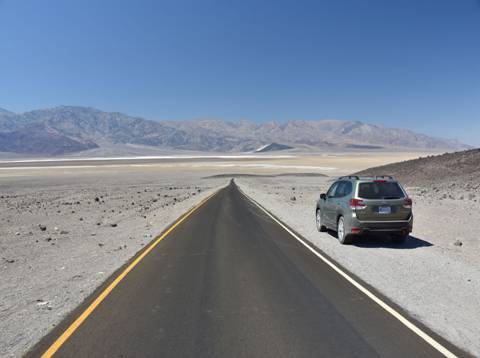
Southwest USA
Retirement Trip
September 2019
29 Days – 6,500 Miles – 19 States
7 National Parks
Several State Parks – 6,000+ Photos
1 Trillion Insects Squished by Car Windshield
From 108 Degrees to Snow
From 282 Feet Below Sea Level to 12,000+ Feet
Bison, Elk, Prairie Dogs, Lizards, Wild Horses
Elvis, Aliens, John Wayne Westerns
Walking In The Footsteps of Forrest Gump
And More!

Exploring Death Valley
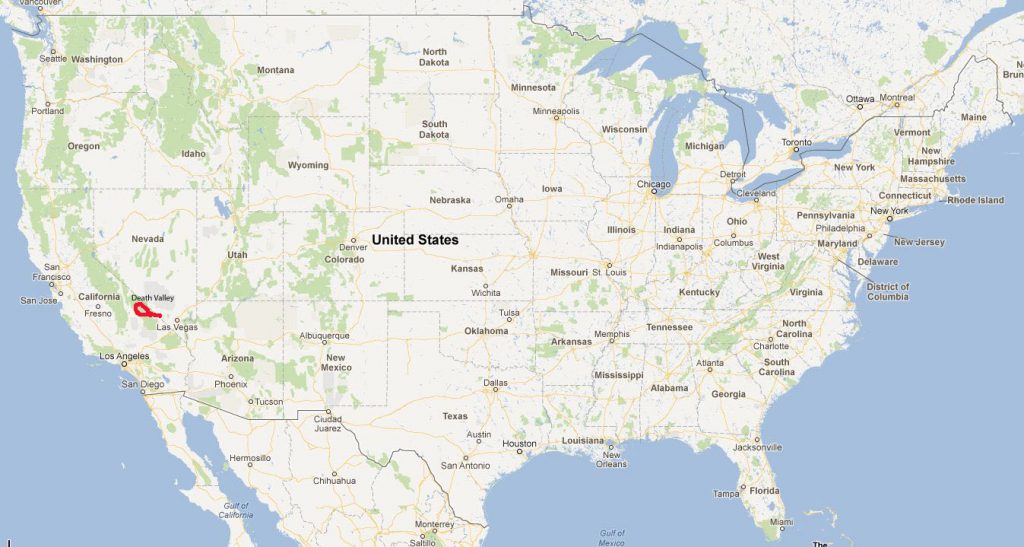
One of the highlights of this trip was Death Valley. Ever since I was a kid in the 60s watching Death Valley Days on TV, I’ve been fascinated with that area of our country. Since we started planning our trip to the Southwest years ago, Death Valley was on the “must see” list.
It is also the farthest west we go on this trip, about 50 miles into California (another first for both of us). Today, we broke two records for this trip: the lowest elevation ( 282 feet BELOW sea level) and highest temperature (108F).
Let’s go!
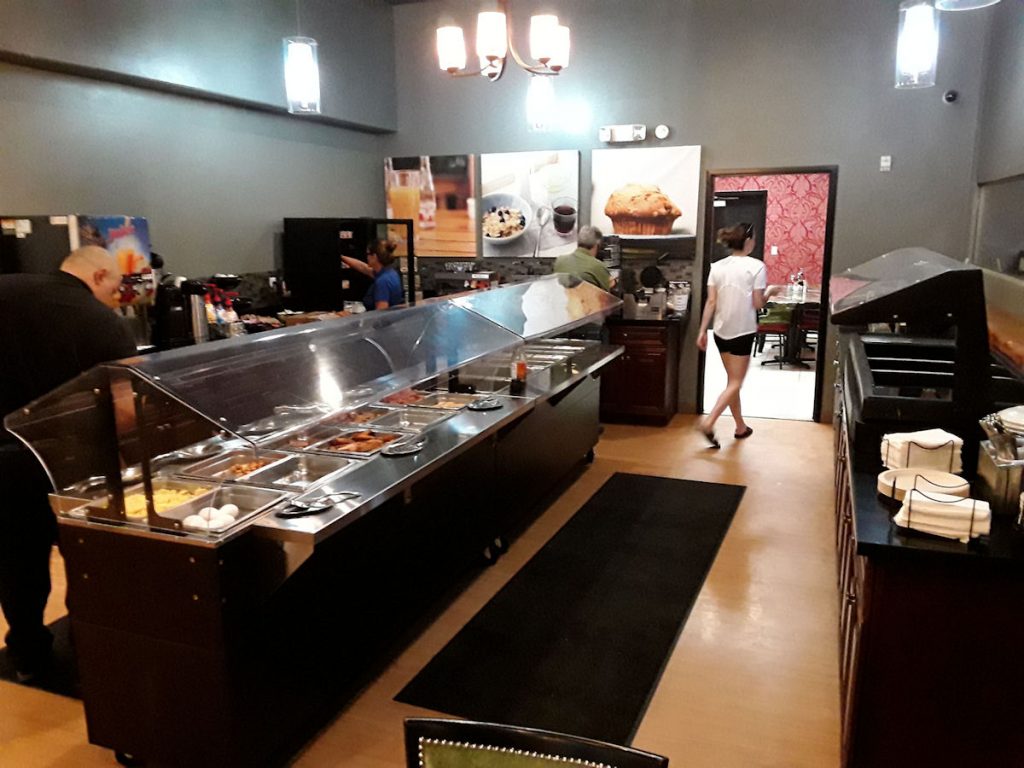
We were on the road by 7am. If you’re heading to the hottest spot on earth, it’s best to get there early in the day.
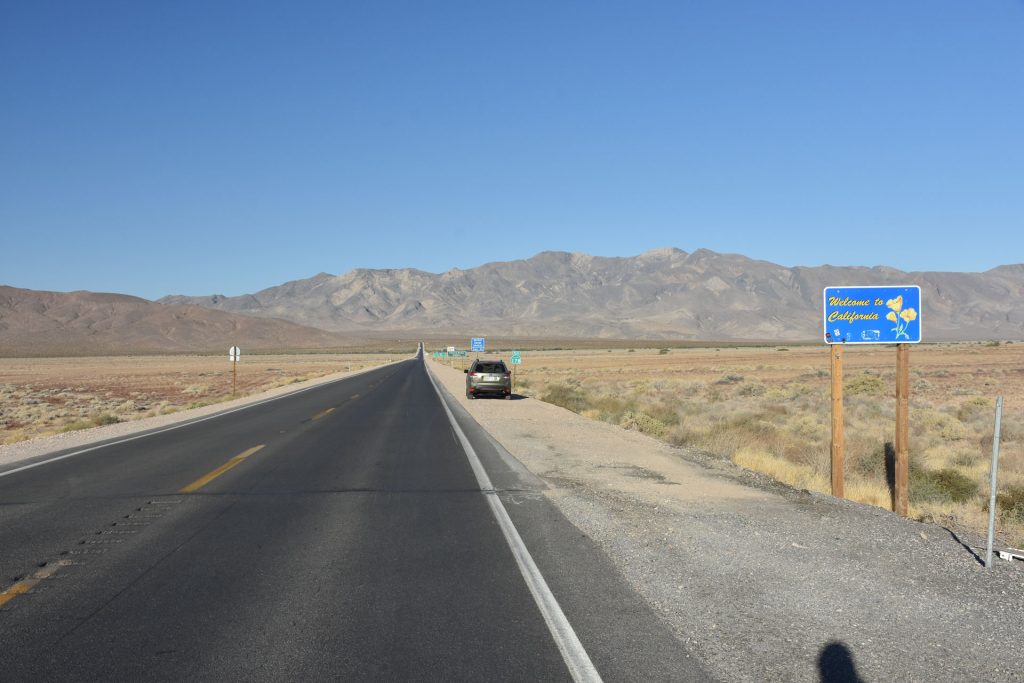
Death Valley is on the other side of the mountains ahead.

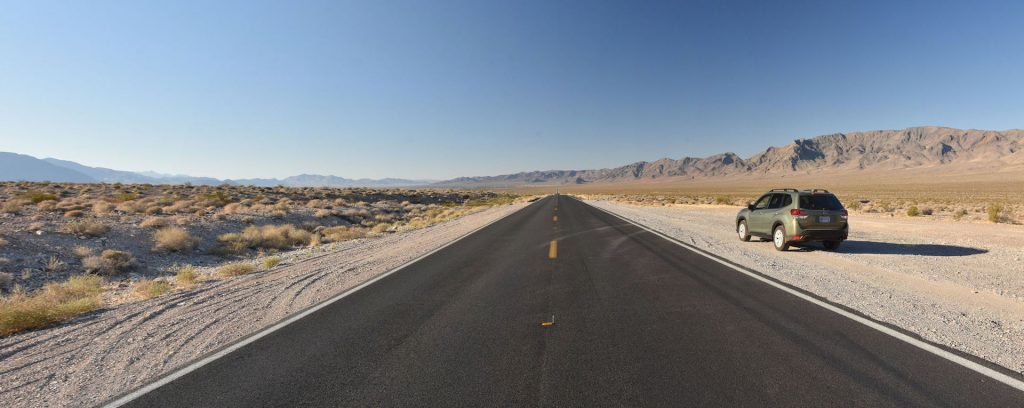
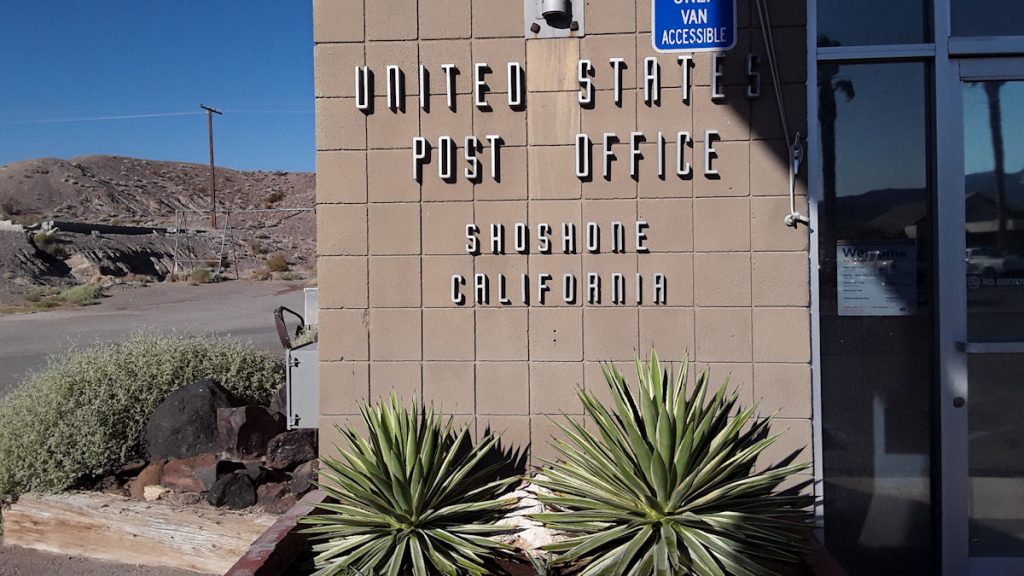
Beth was admiring the plants and flowers.
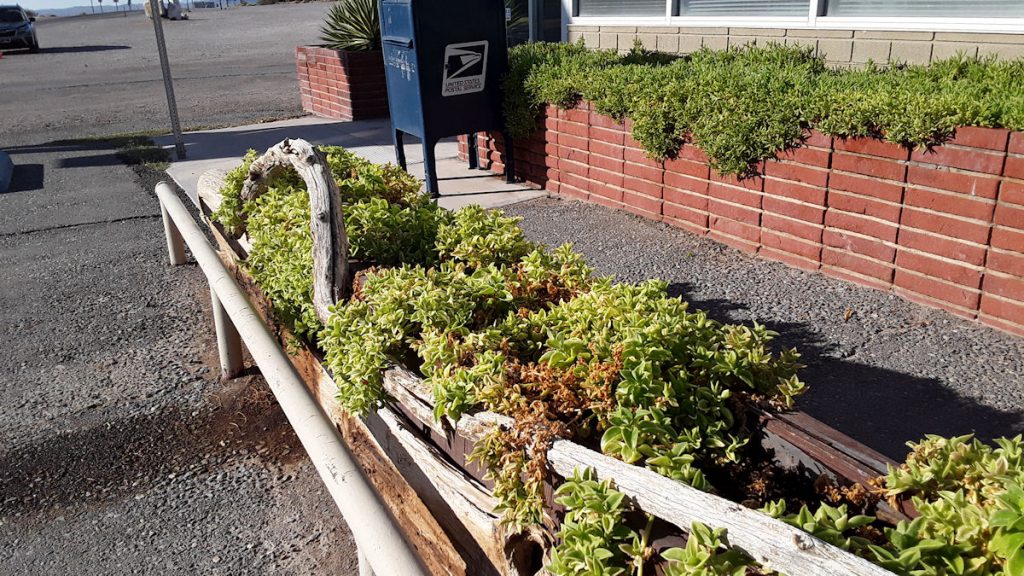
How can they grow so much bigger in Death Valley? LOL

We have a full tank of gas, plenty of drinking water and Gatorade, snacks, and a car emergency kit with fluids and tools.
Tire pressures are all good (including the spare). Let’s go!
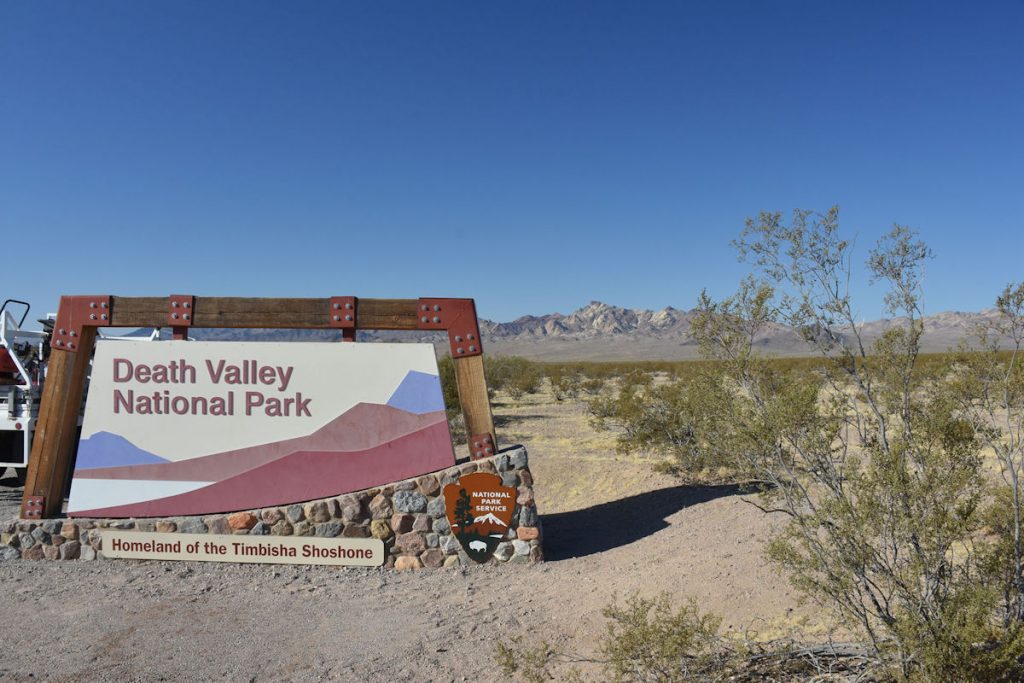

The northern area around Scotty’s Castle will be closed until 2020 due to flood damage.
The next photo shows that box in more detail along with our route.
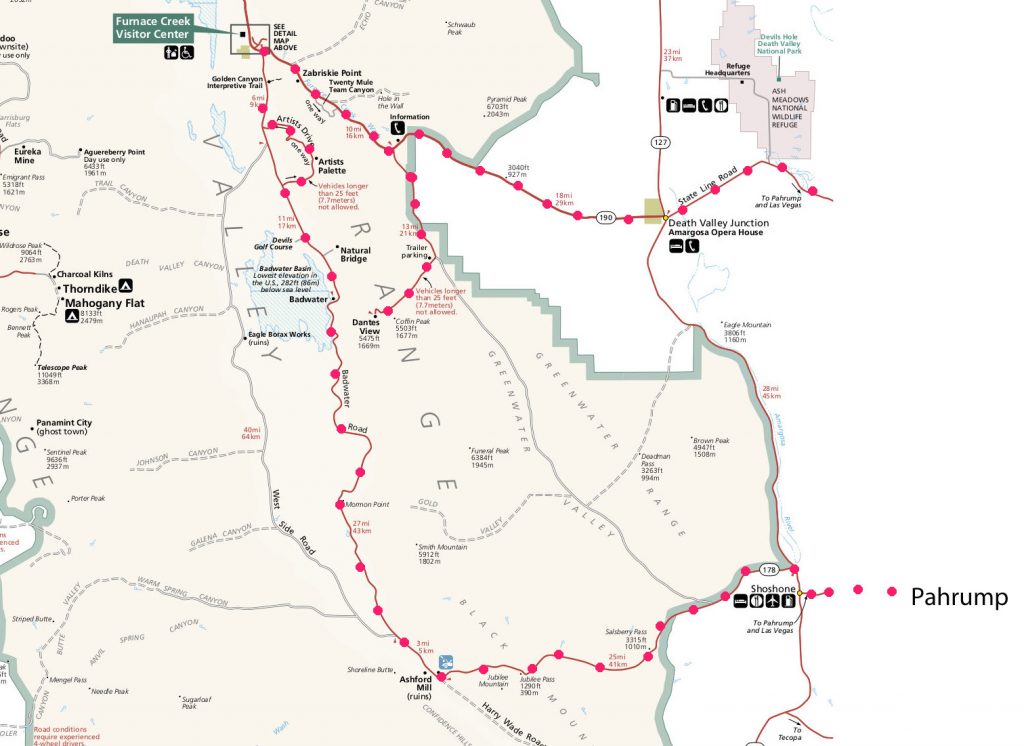
After reaching the Furnace Creek Visitor Center, we continued clockwise (east), taking a detour to Dante’s View before returning to Pahrump.


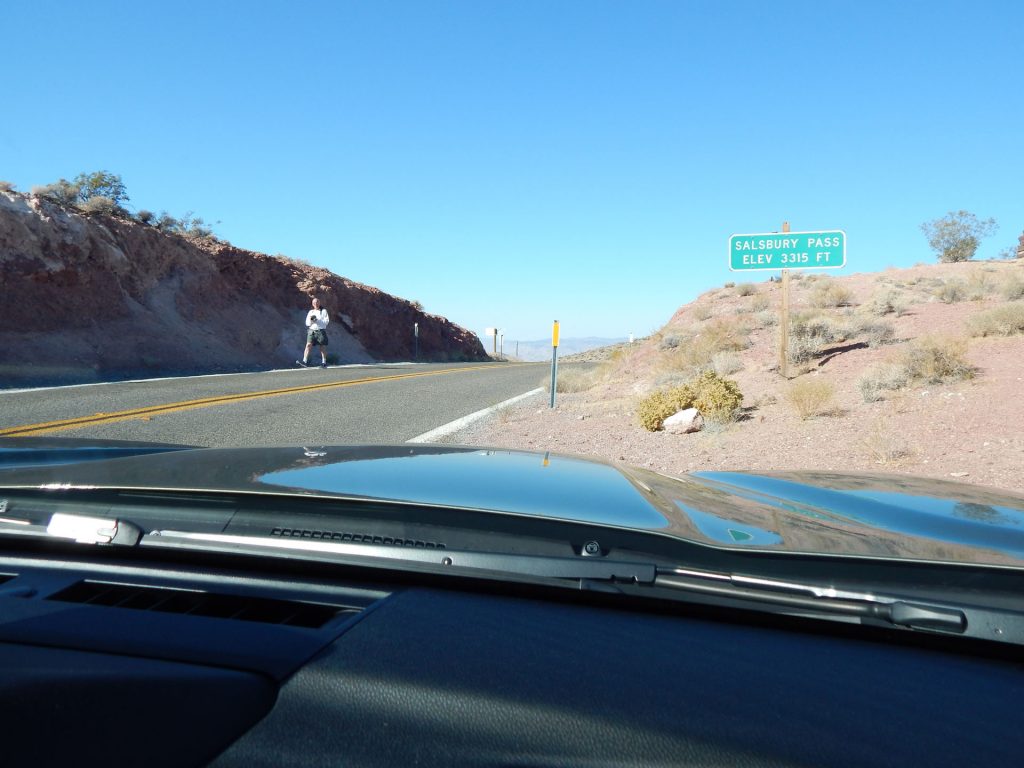
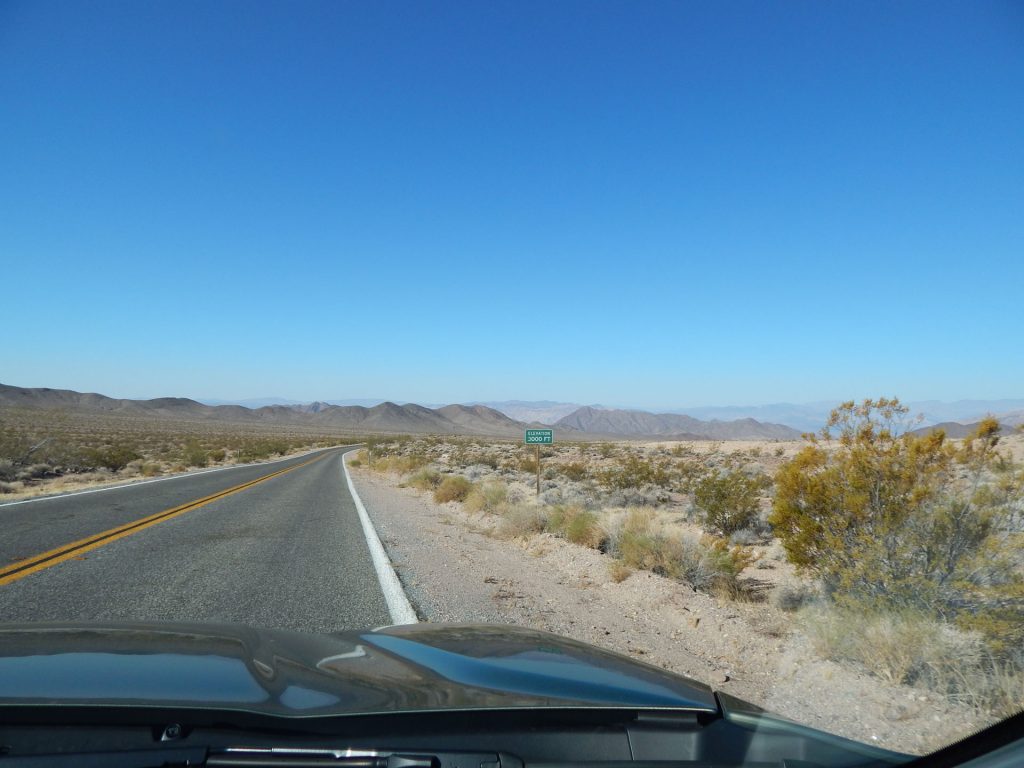
Within a half hour, we will be at Badwater and 282 feet below sea level.
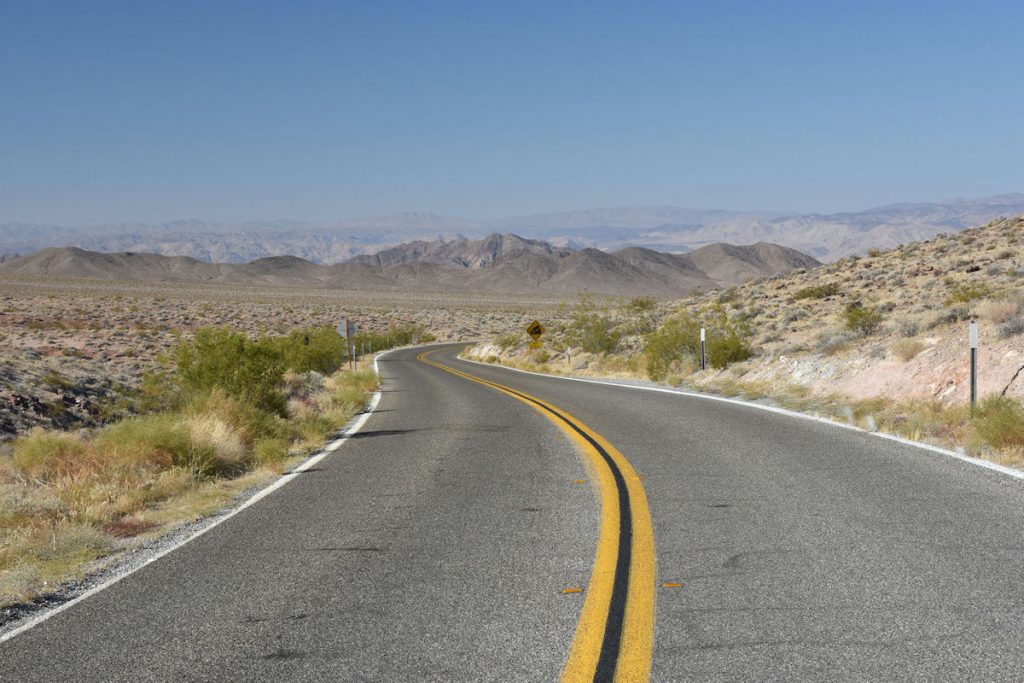
I’ve hardly touched the gas pedal since we have been coasting downhill the past 5 miles.
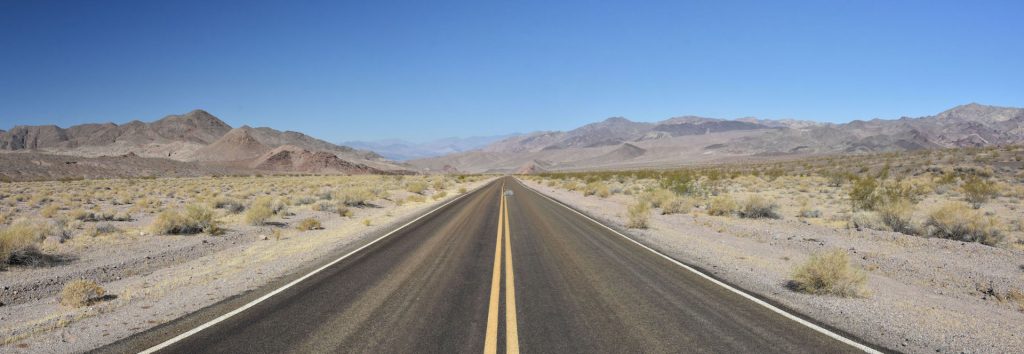
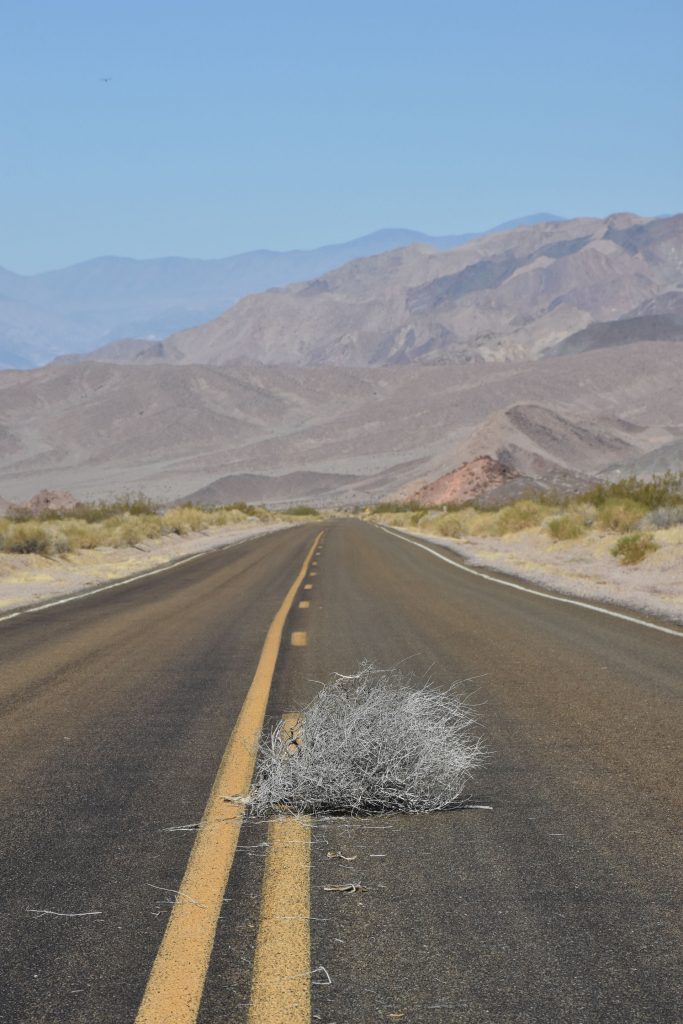
An honest-to-goodness old west tumbleweed in Death Valley.
How cool!
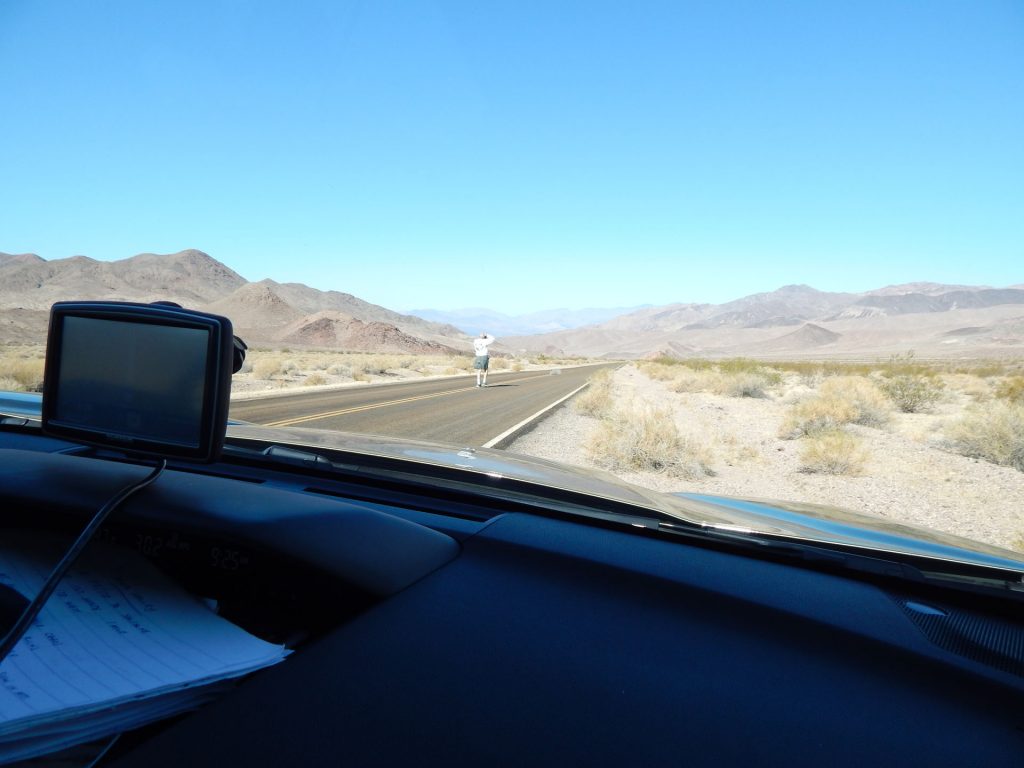
Someone has to go out the intense heat and do the dirty work. Ha!
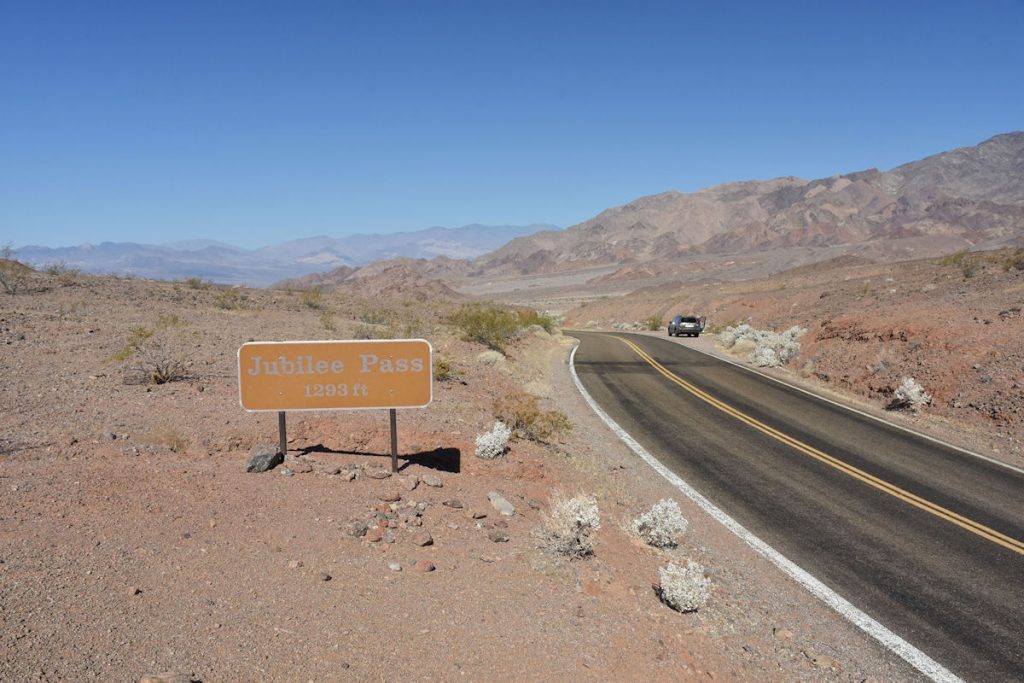
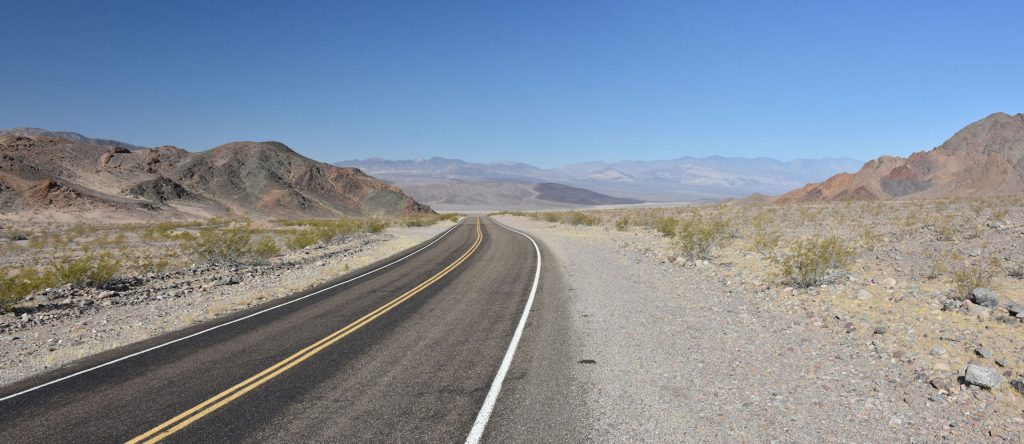
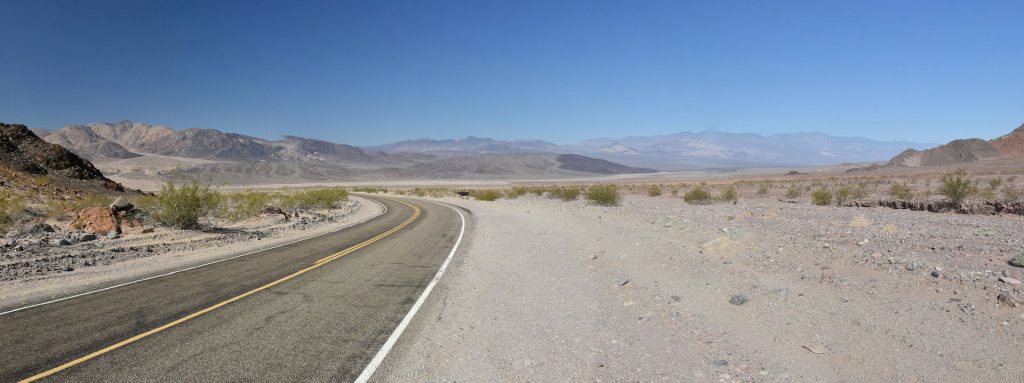
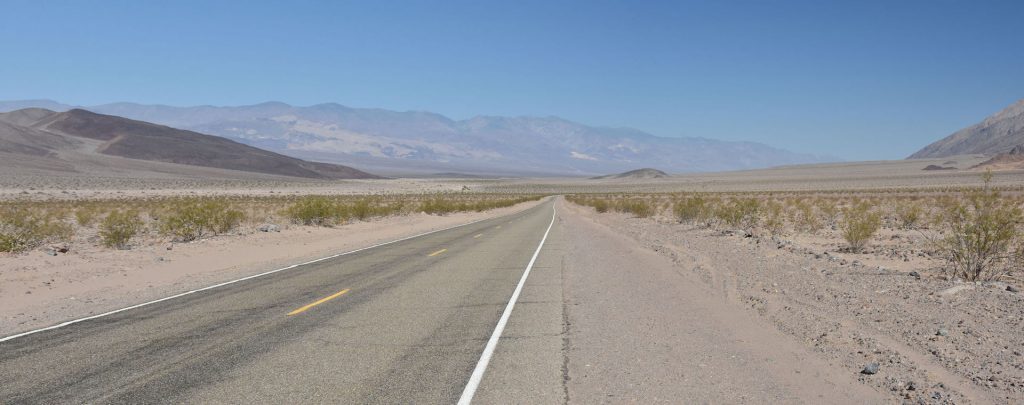
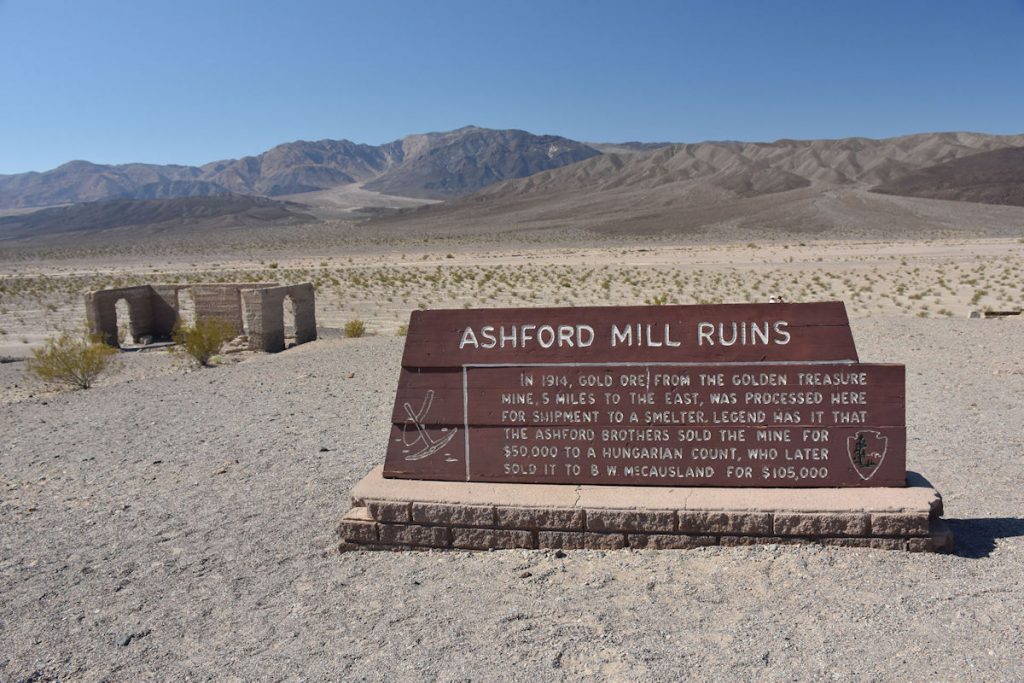
Like many mining operations in Death Valley, it was unsuccessful.
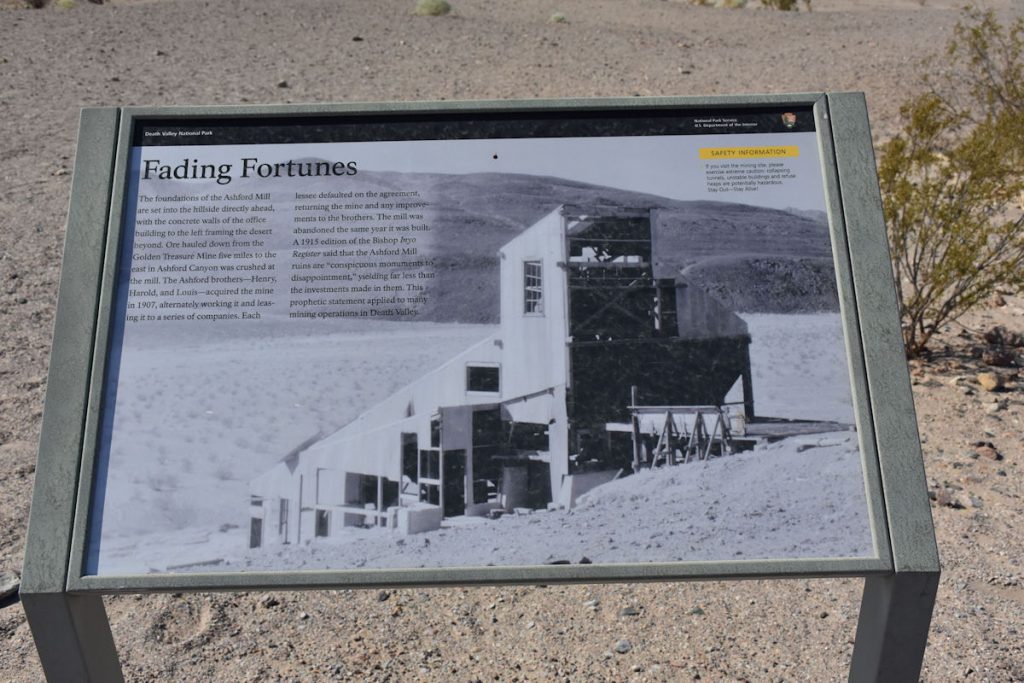
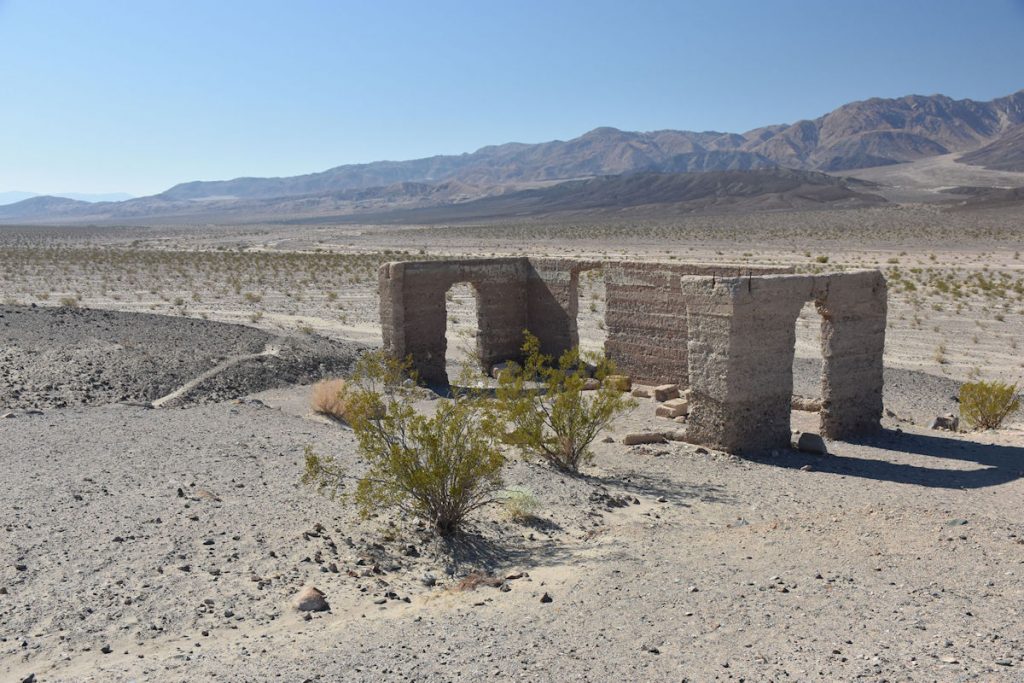
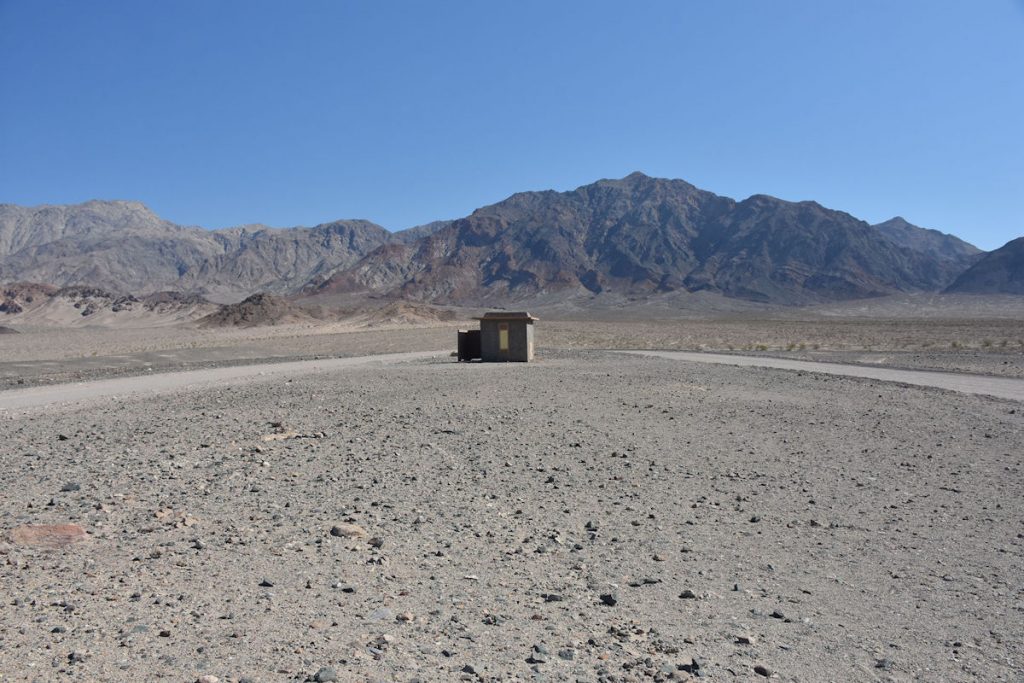
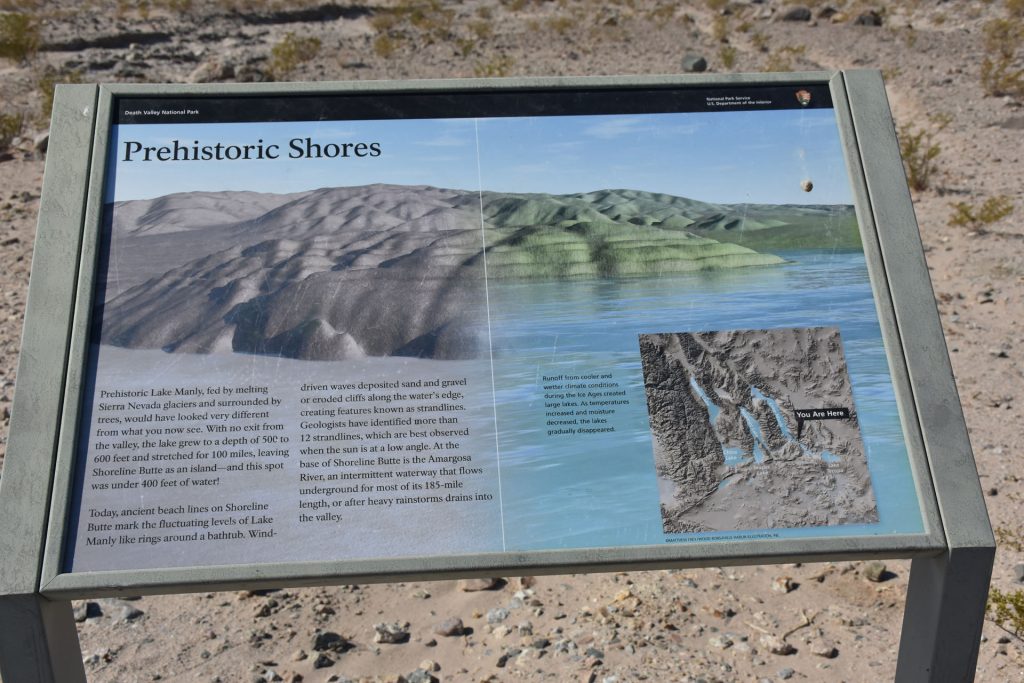
Millions of years ago, this was a lake up to 600 feet deep.
The different water levels are evident on the side of a nearby hill. (See next photos)
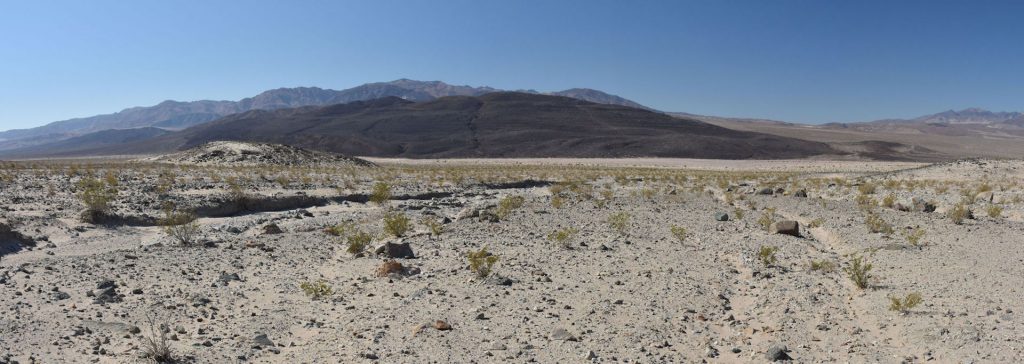
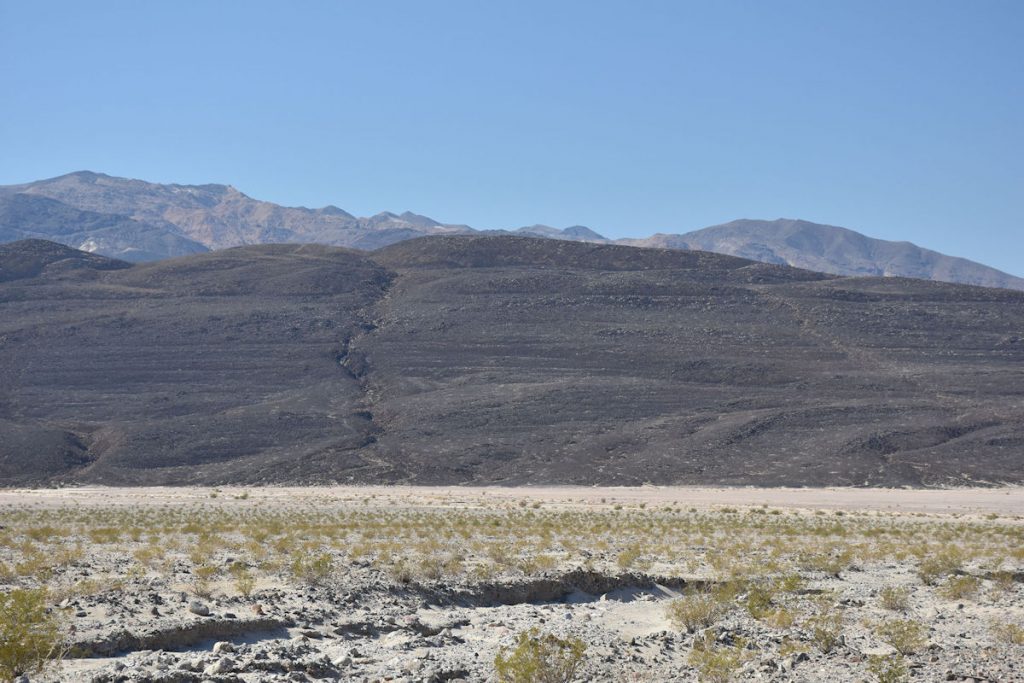
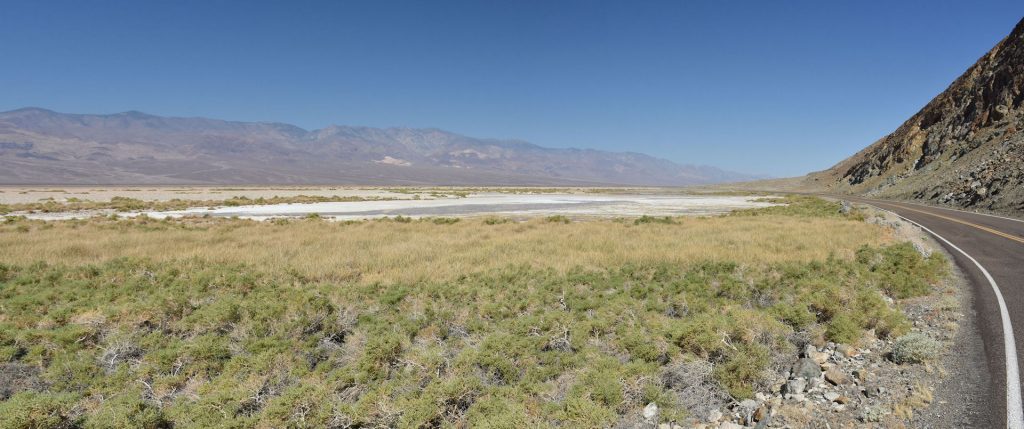

ash beds, mudstones and conglomerate rocks. It is a popular, but difficult hiking trail.
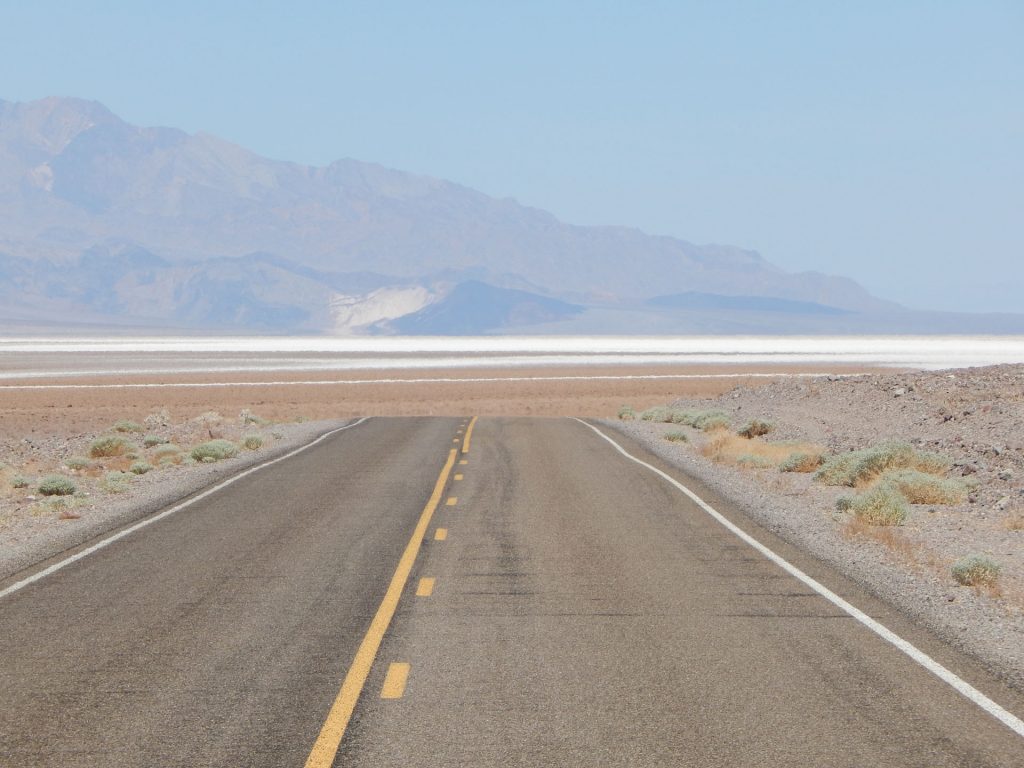
Here, you can see the heat waves coming up off the road.

Up ahead, to the right, is Coffin Peak and Dante’s View. We will be visiting there later for great views!
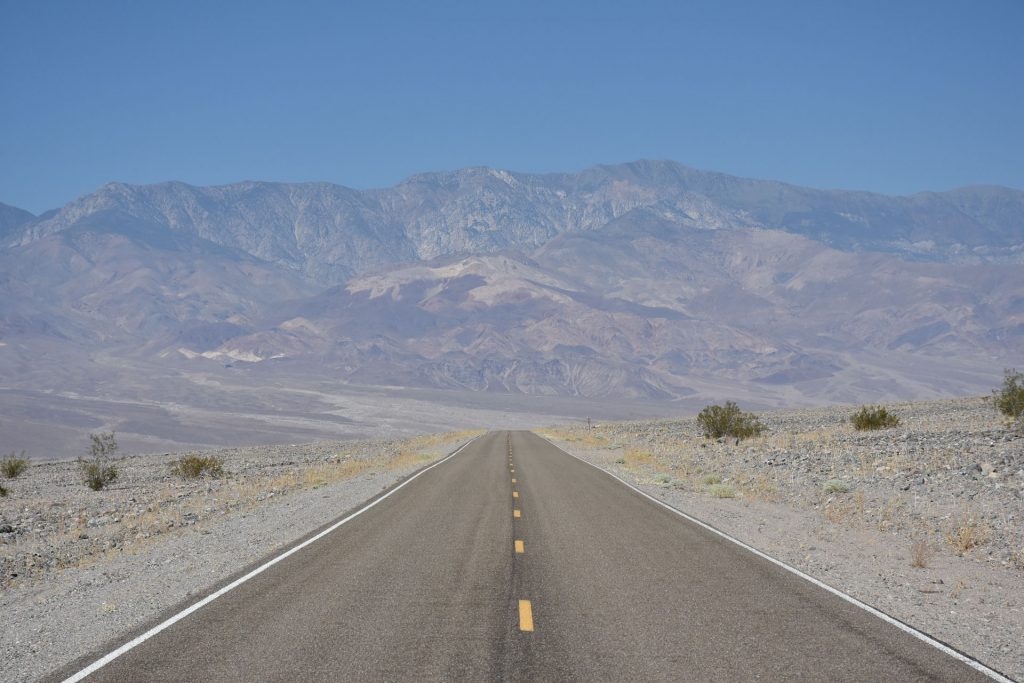
We are both fascinated even though we know very little about geology.
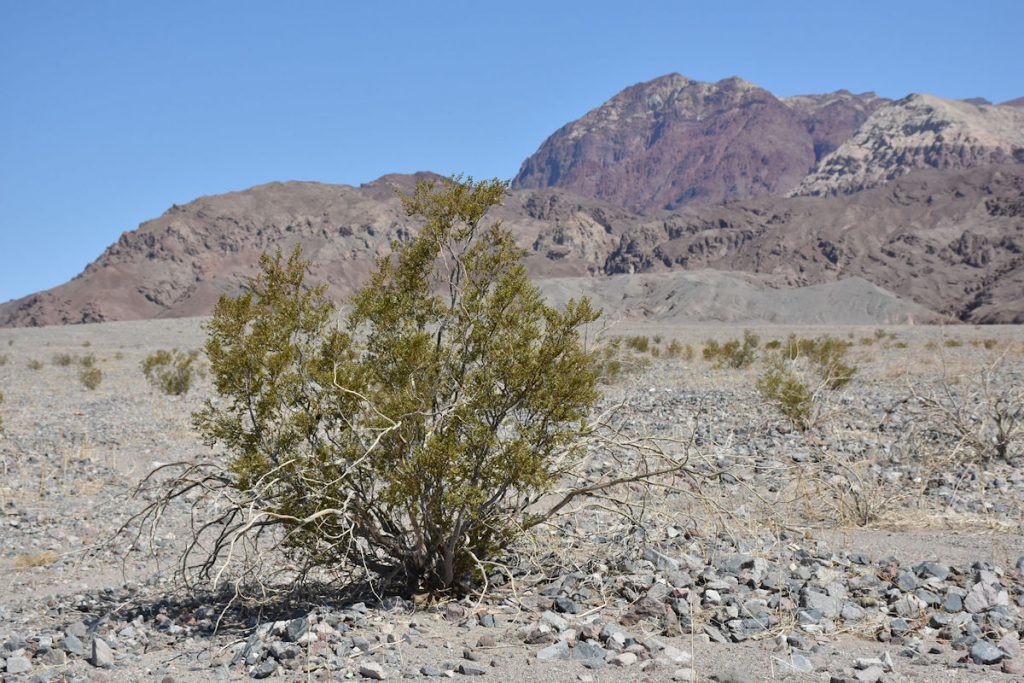

This little guy is only about 2 inches long (including tail).
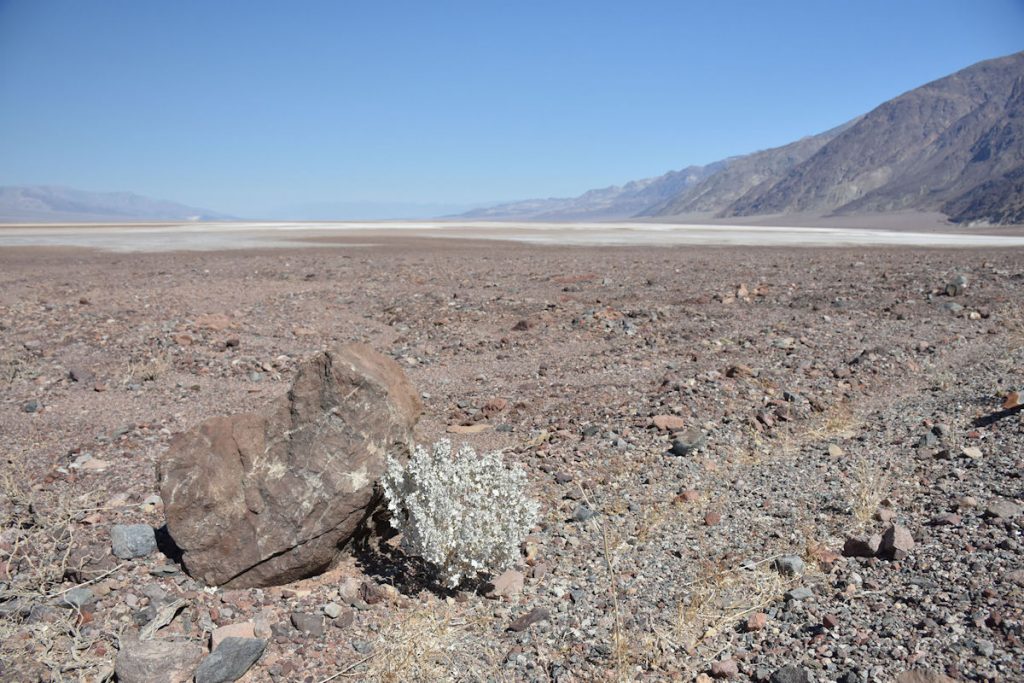
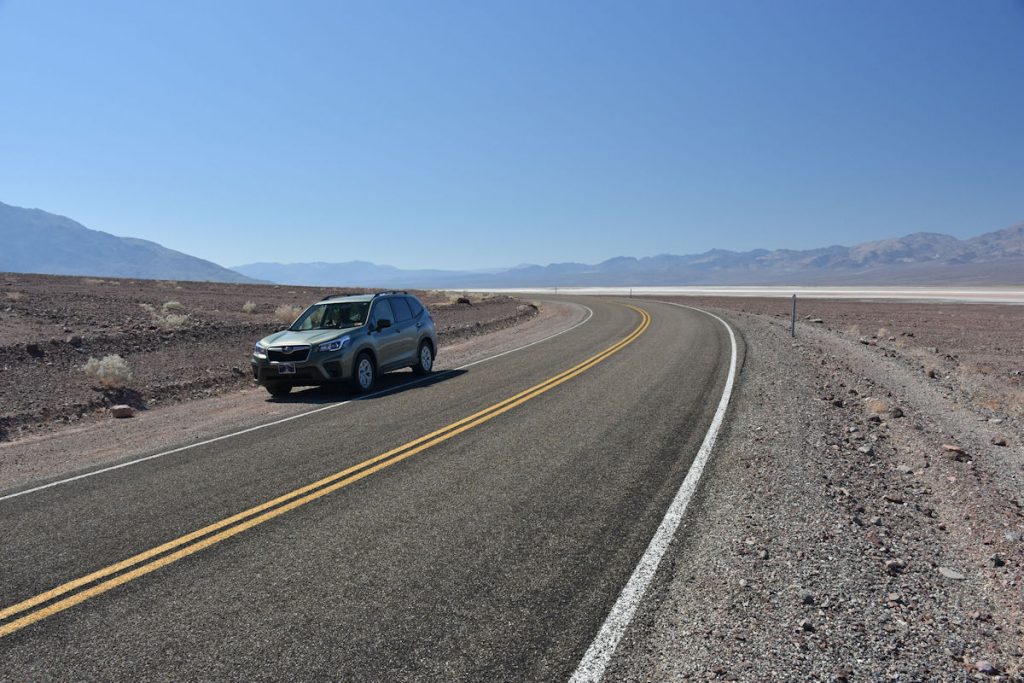
Nice, cold A/C ran continuously and the temperature gauge never went above normal.

This spot holds several records. Read on…..

Mt. Whitney the highest point in the 48 contiguous states (14,505 ft), is only 84 miles away.
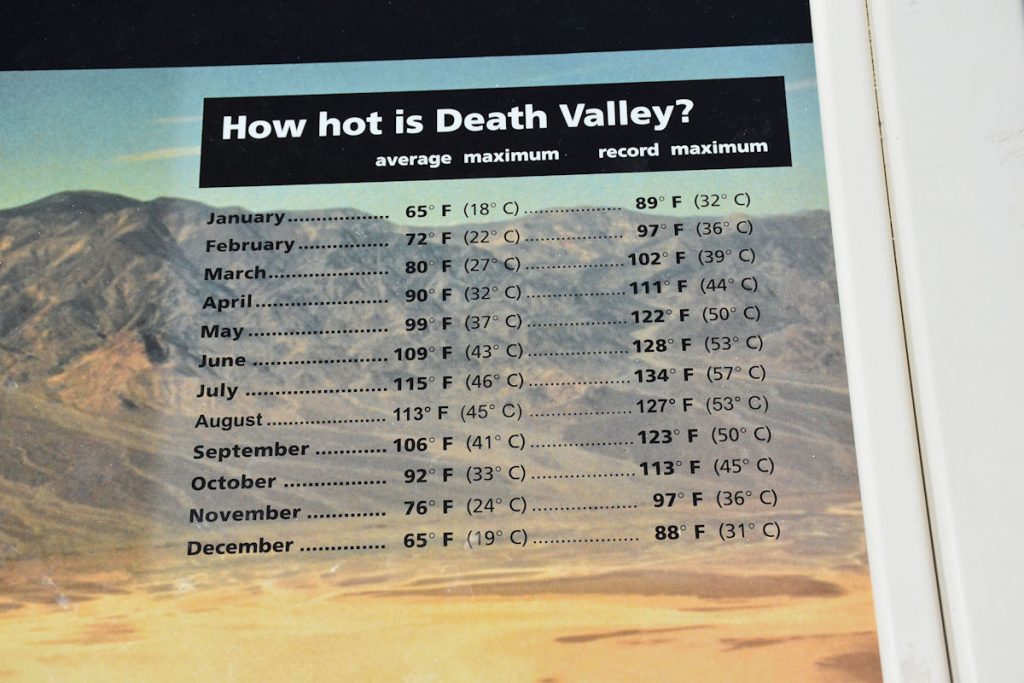
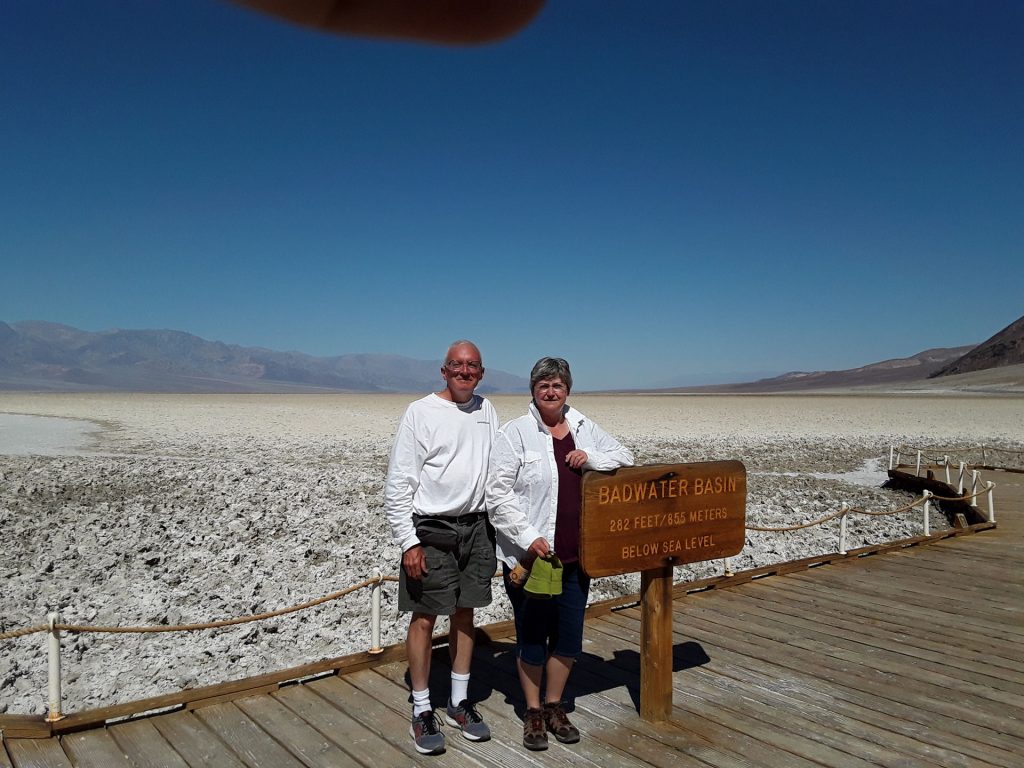
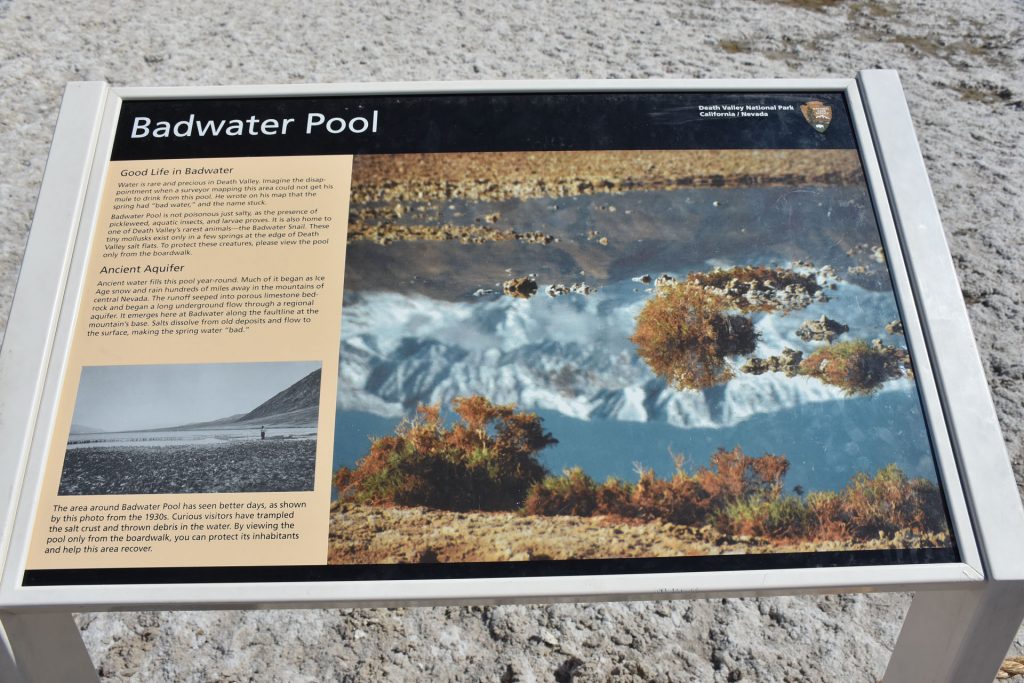
We did not see any of the tiny mollusks today.
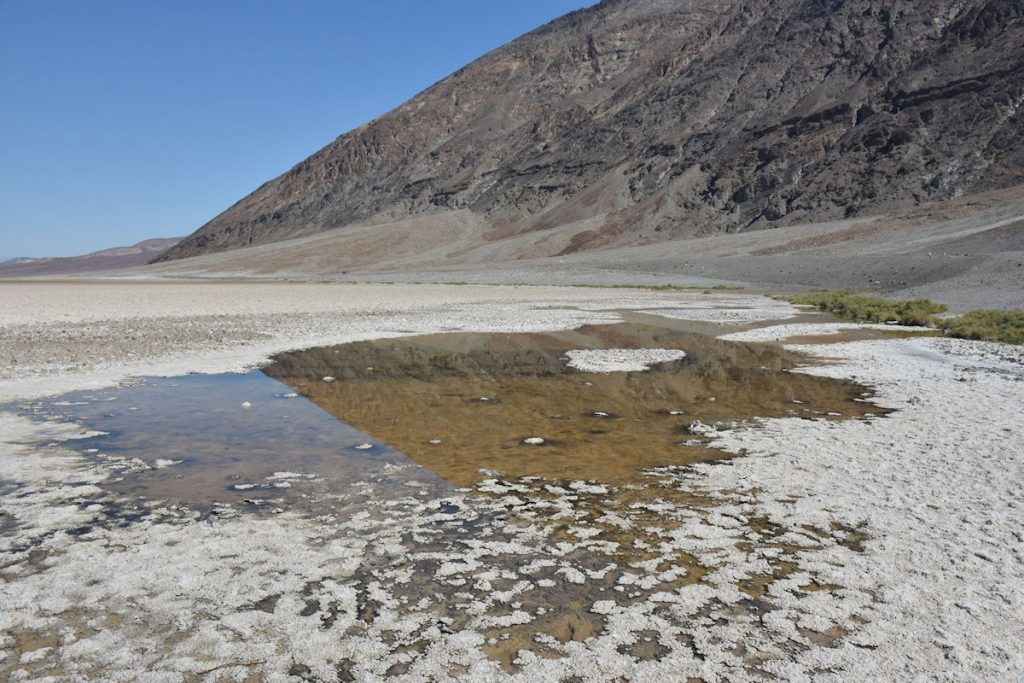
So salty, the early prospectors’ mules would not drink from it.
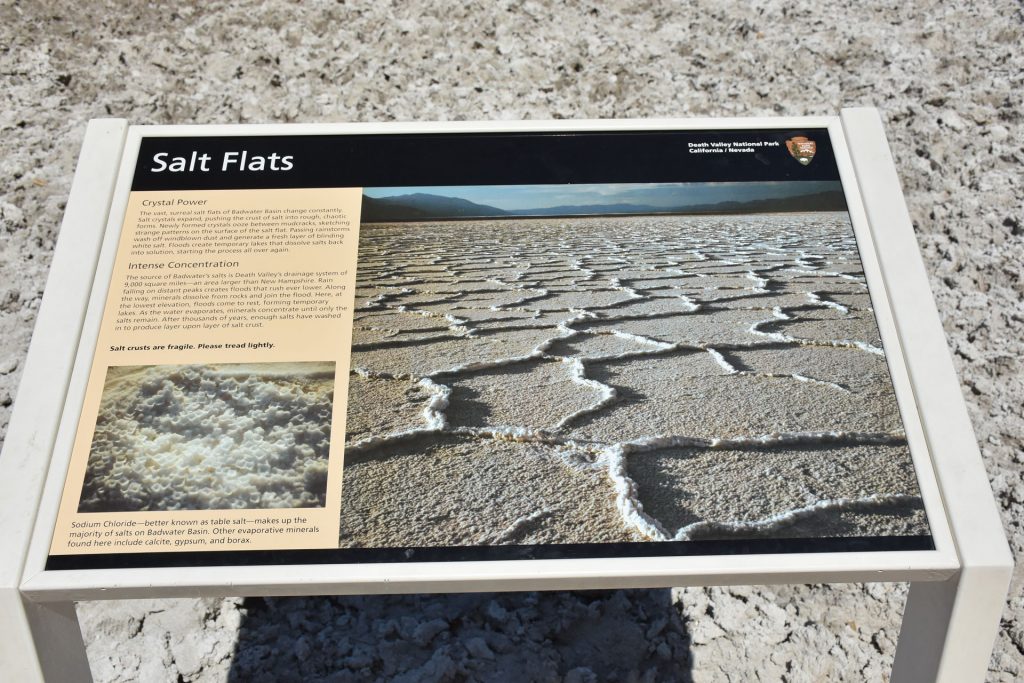
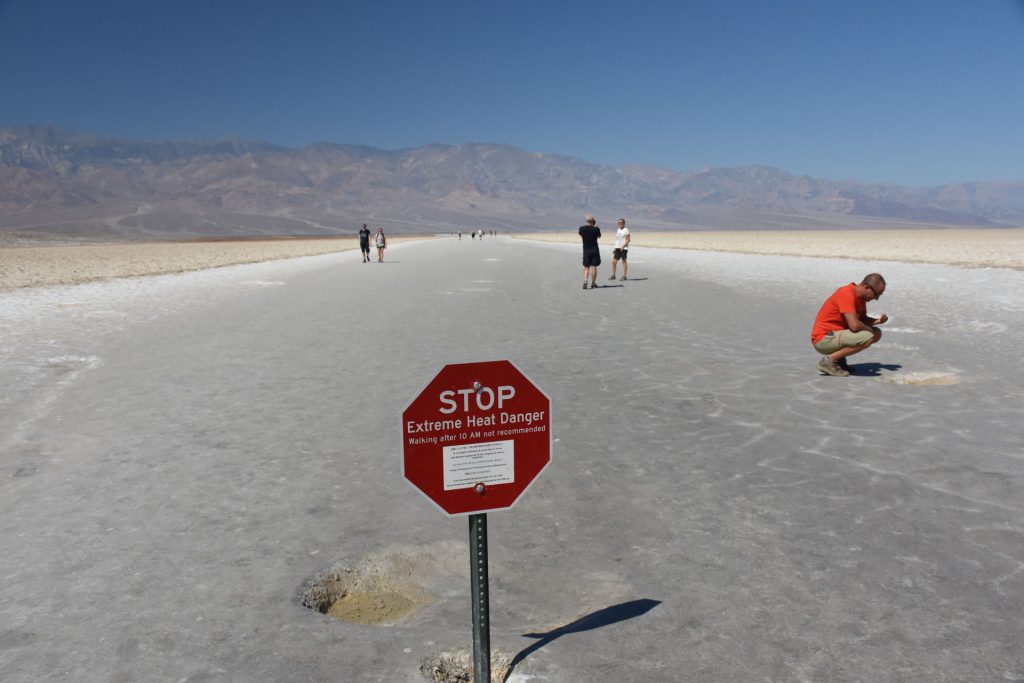
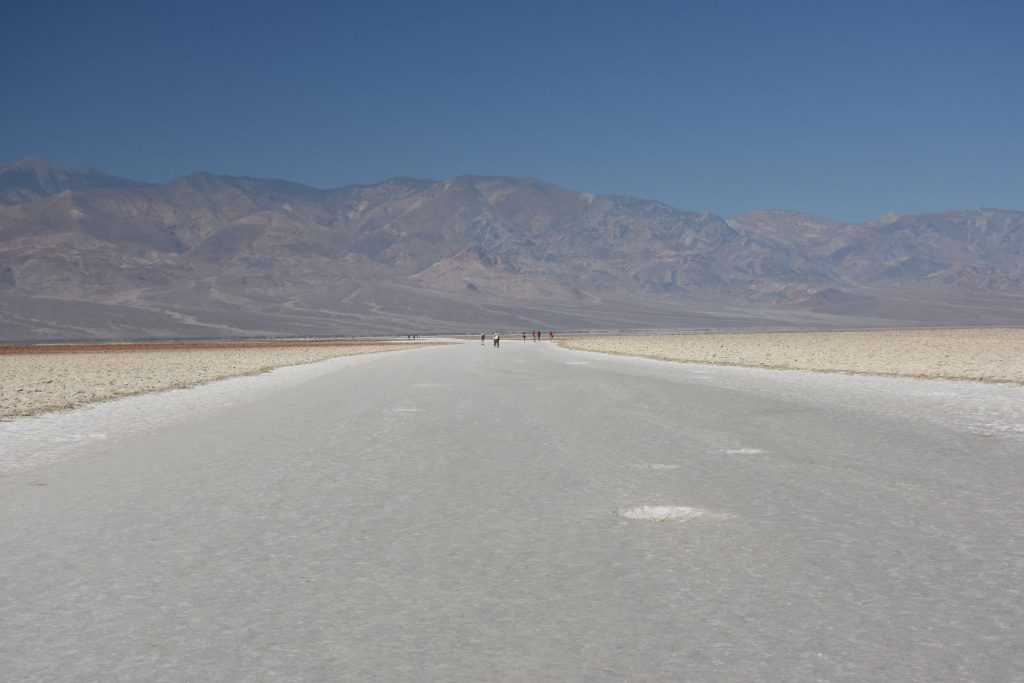
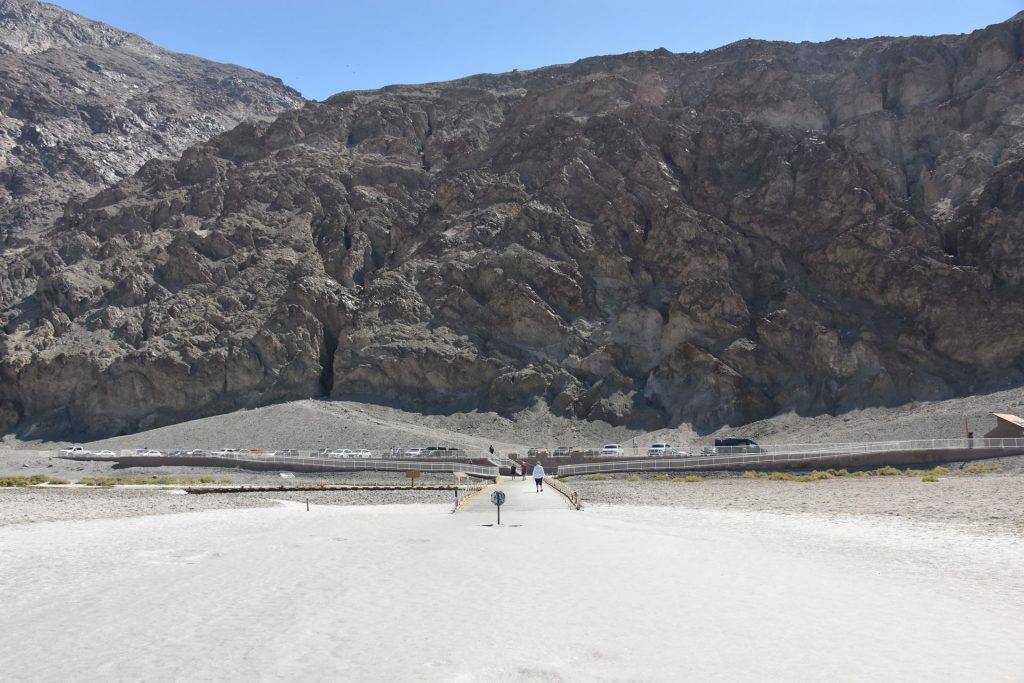
Straight ahead, about halfway up the mountain, is a small sign that says “Sea Level”.
When we got back to the car, there was a young lady walking around asking if anyone had tools. There was a group of bicyclists riding through Death Valley with a support van (visible ahead to the right), but one of the bikes broke and they did not have some simple tools. Luckily, I had what they needed in my emergency bag and they were able to get it fixed. It was their lucky day.
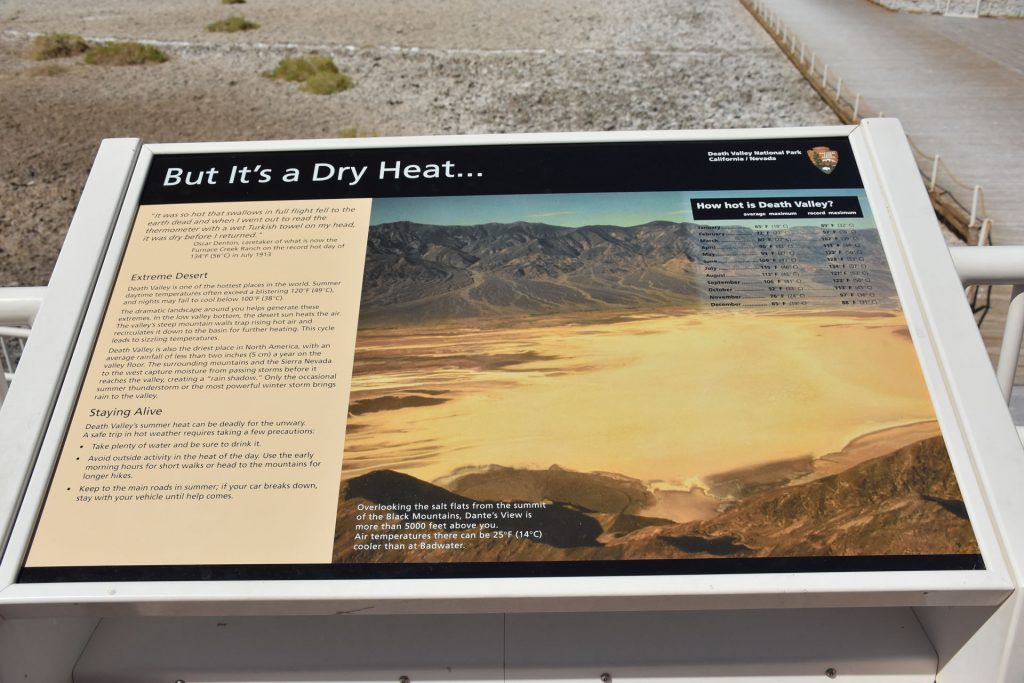
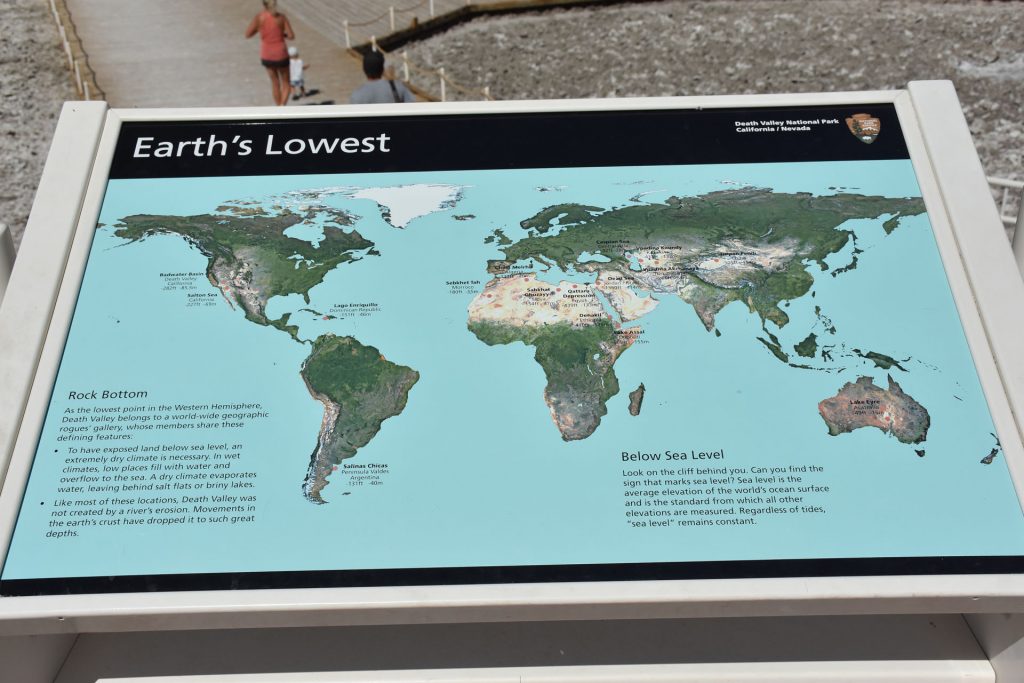
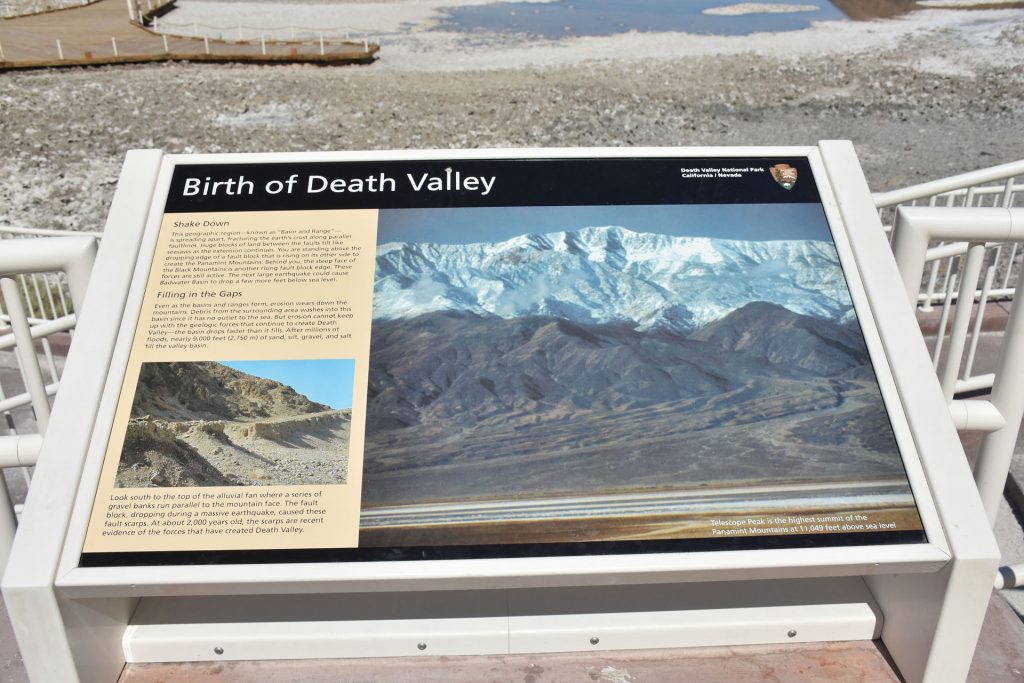
As the valley floor sinks lower, it is also filling up with debris washed down from the mountains. However, the basin is dropping faster than it fills,
so the overall elevation continues to drop. A major earthquake could cause it to drop, too.
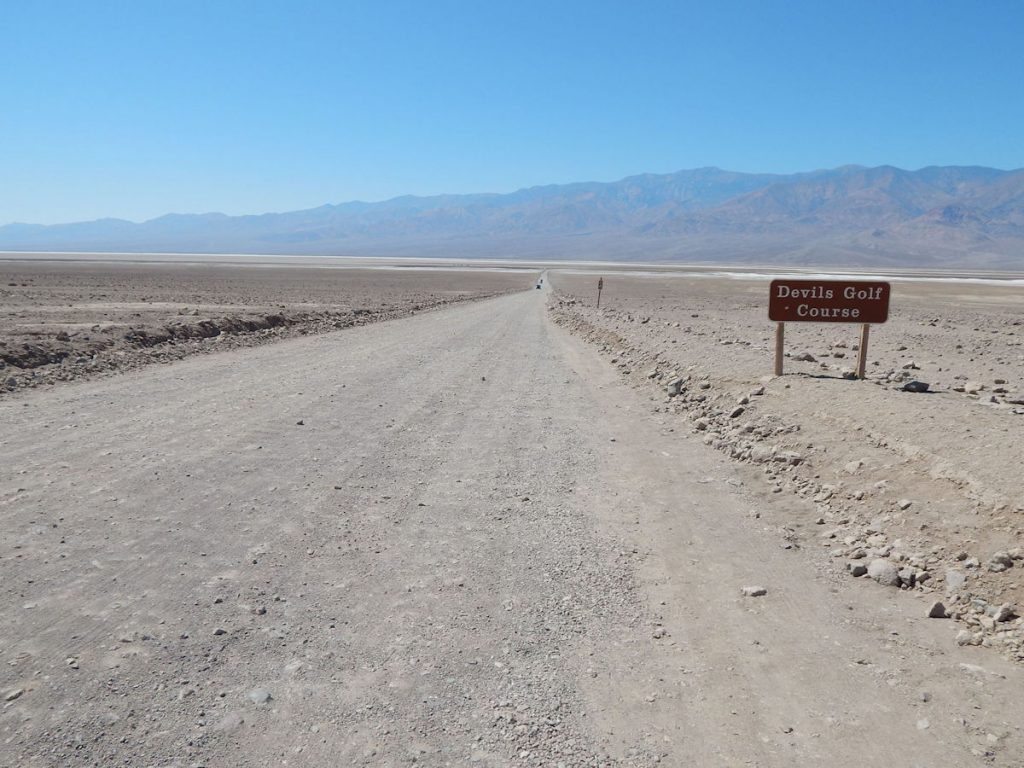
We turned down this gravel road for a couple of miles to get up close.


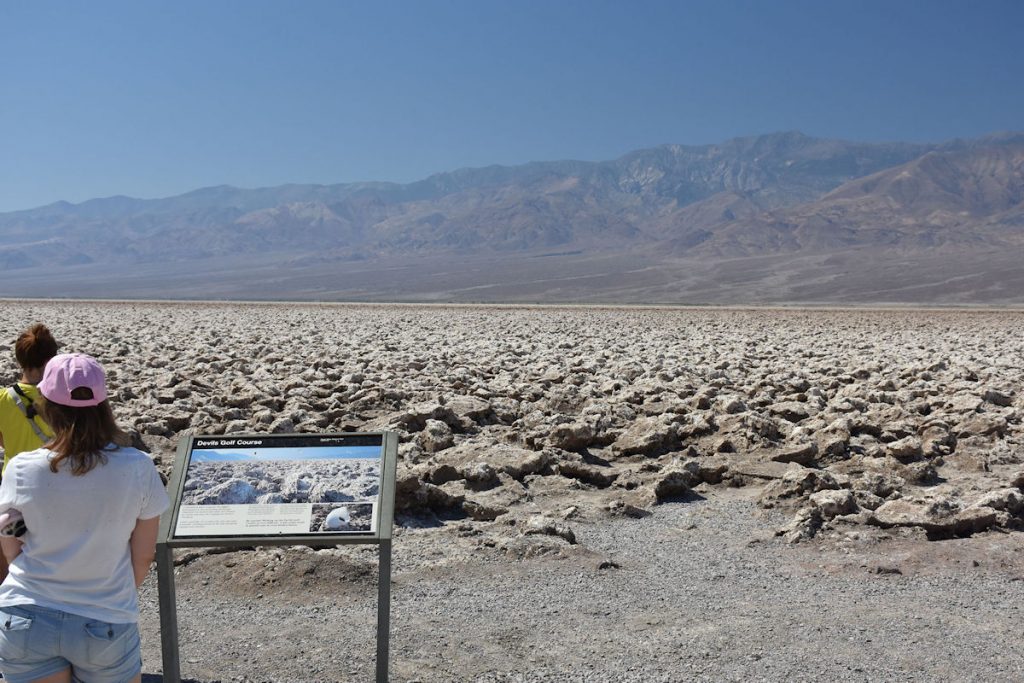
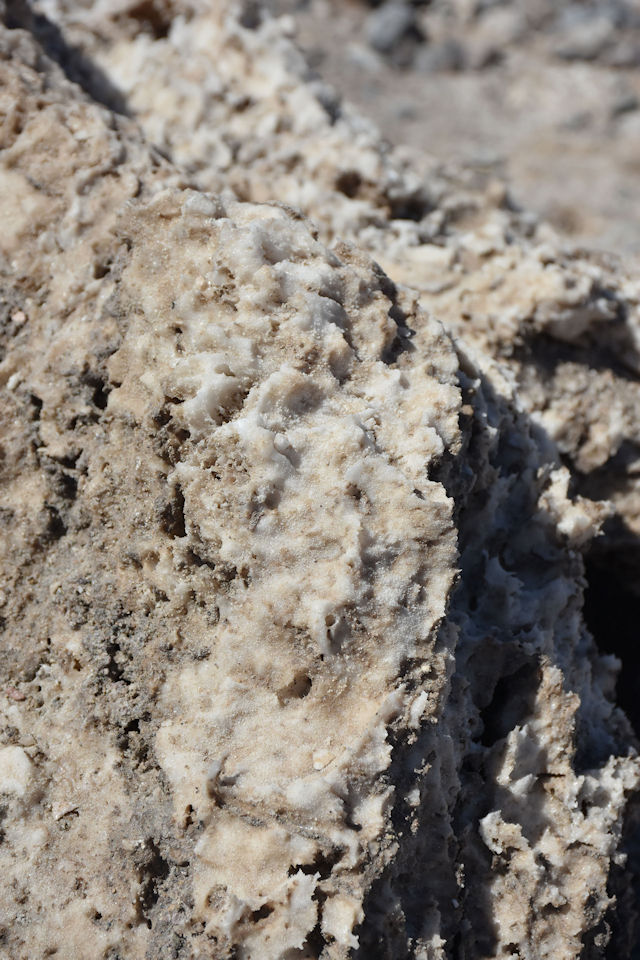
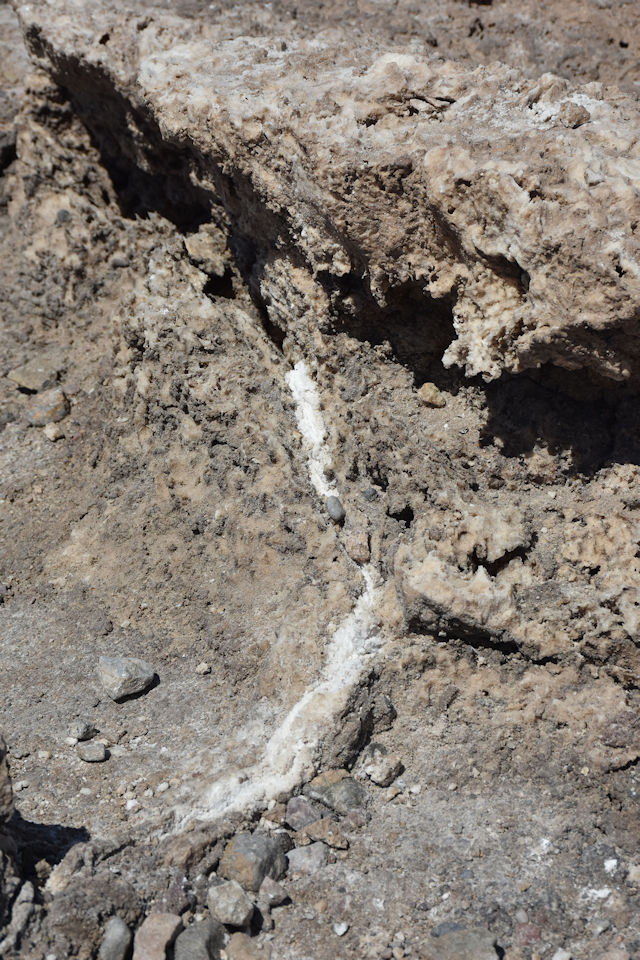
Close-up of some of the salt formations.
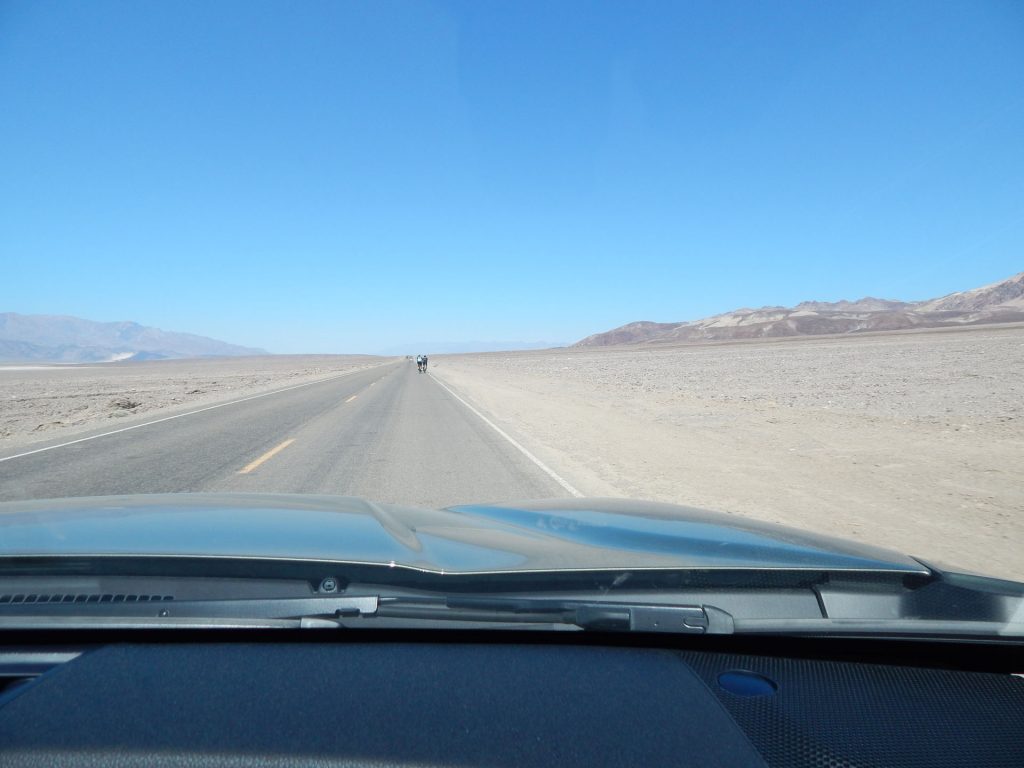
I guess his bike was fixed.
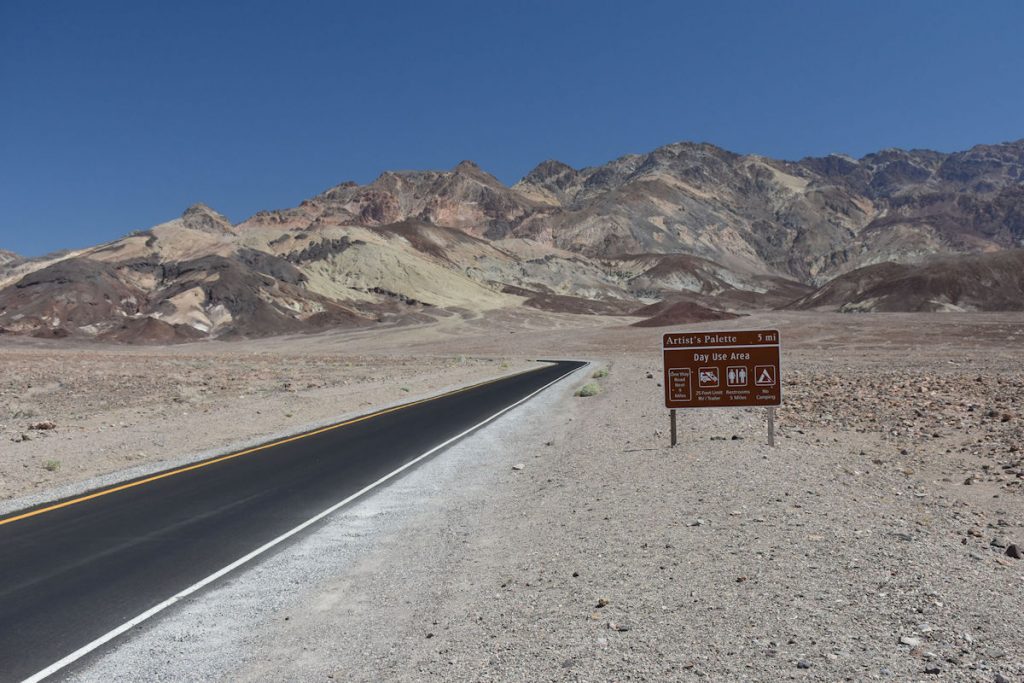


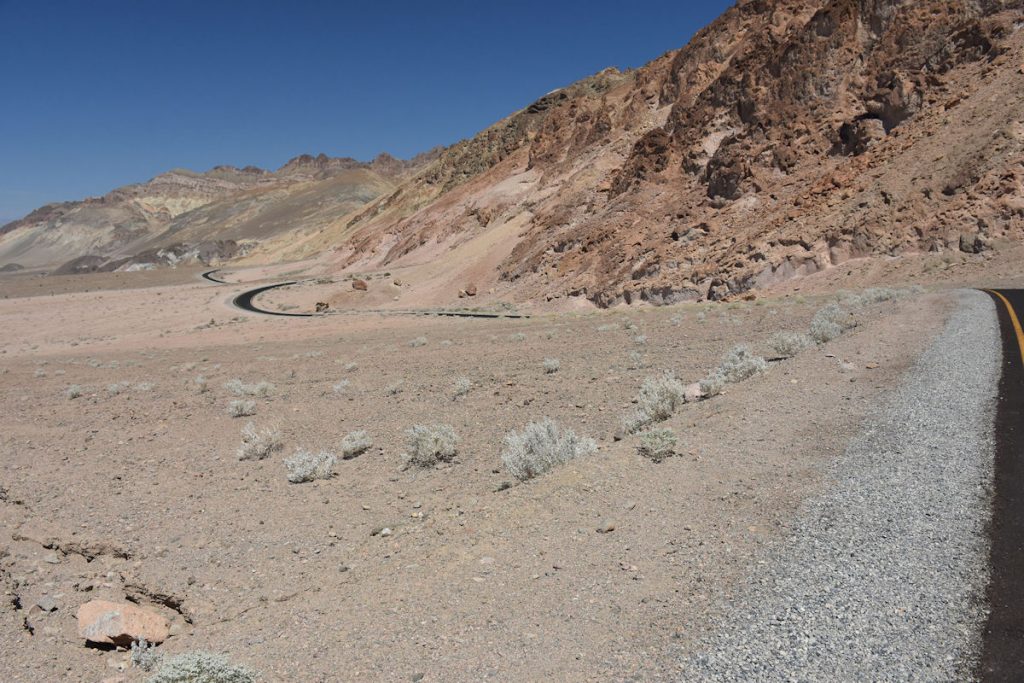
on the east side of Death Valley.
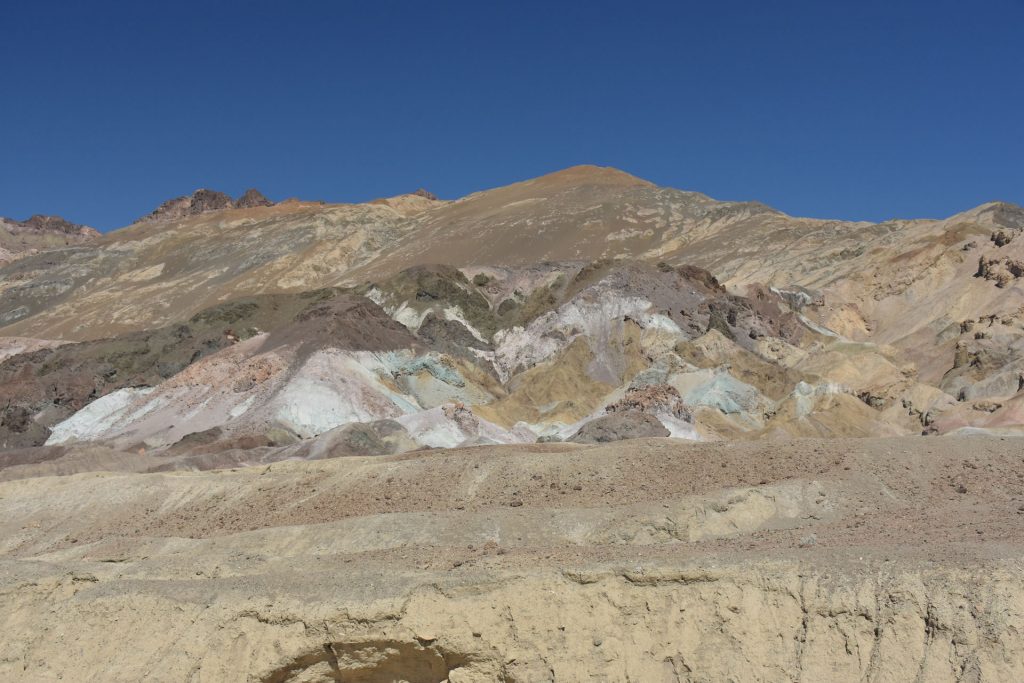
This was close enough for me. Fascinating colors. Appropriate name for this site.
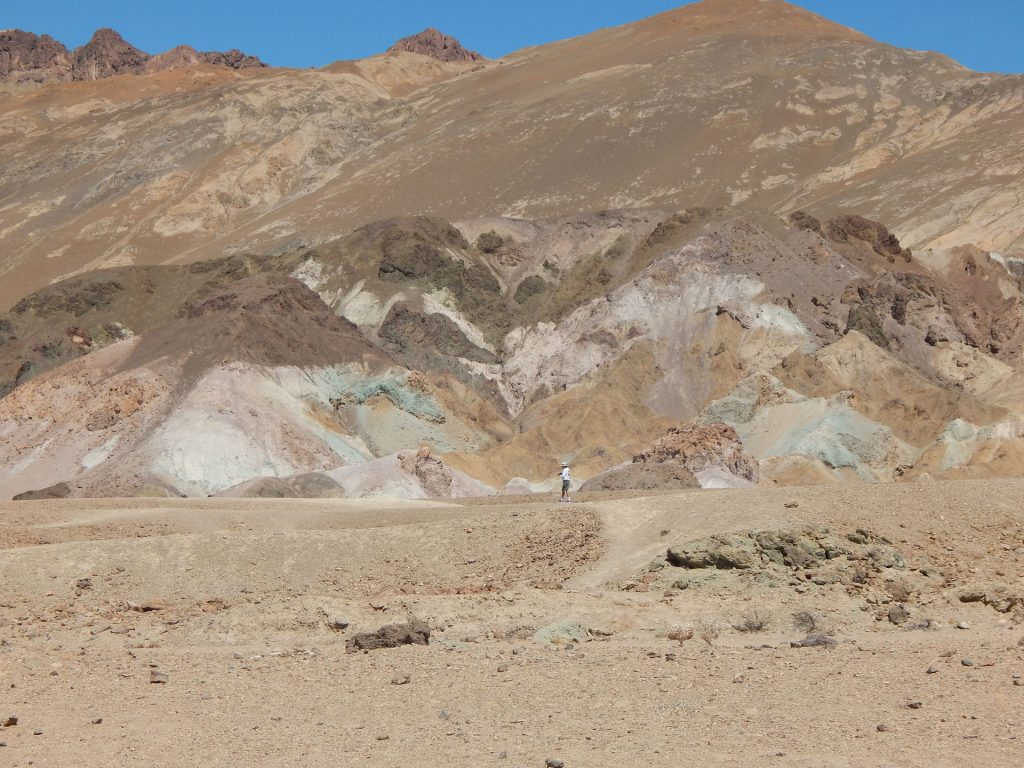
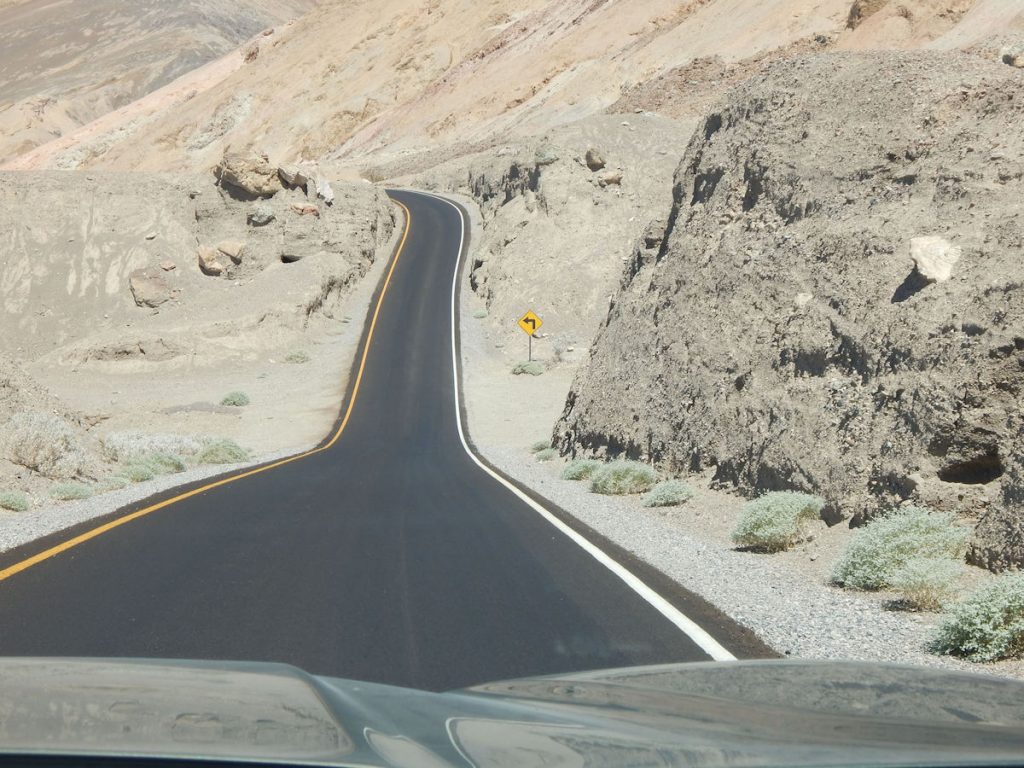
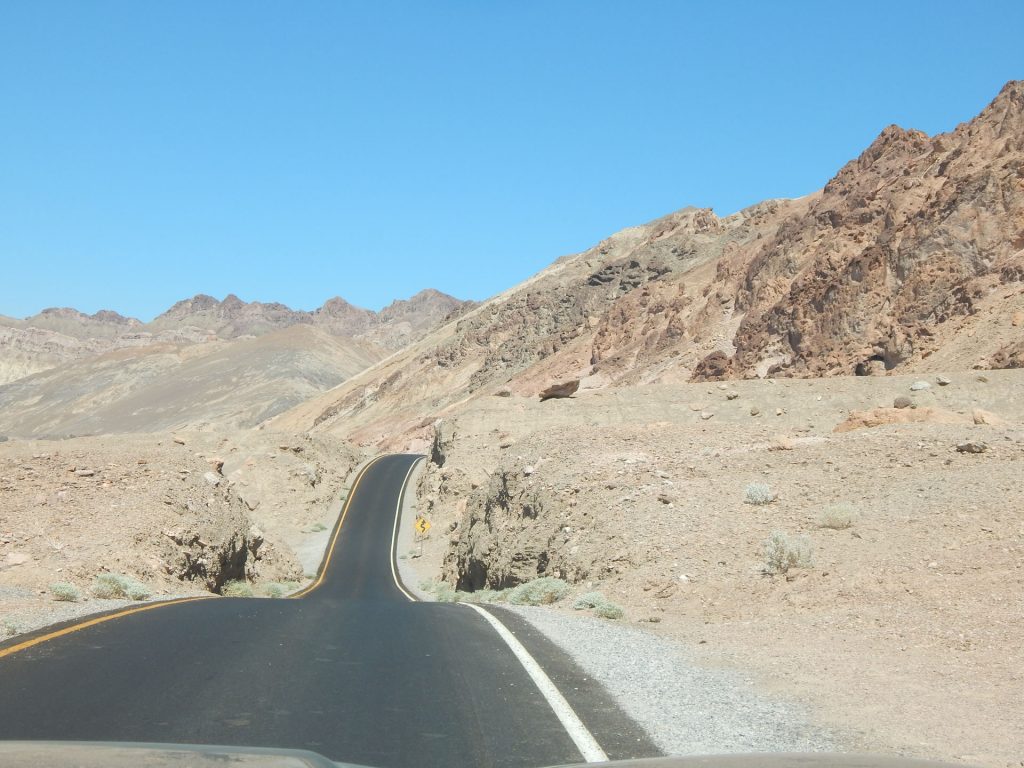
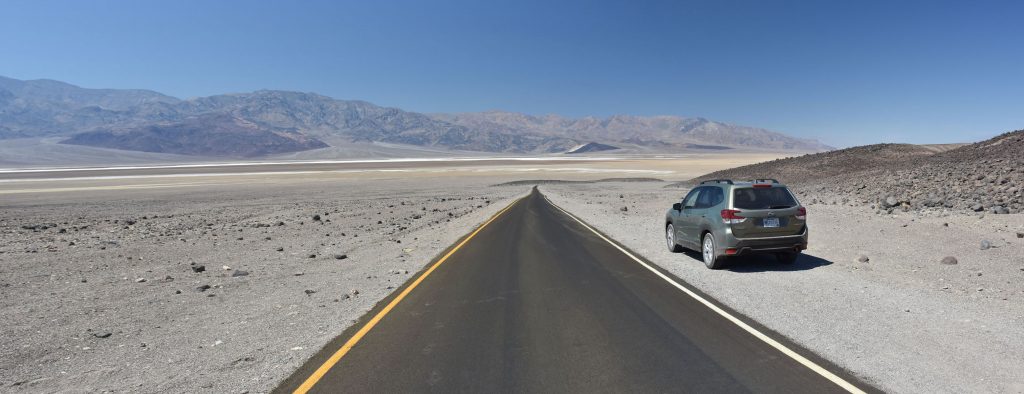

The white streaks are the salt flats at Badwater Basin. They stretch for about 20 miles north and south.
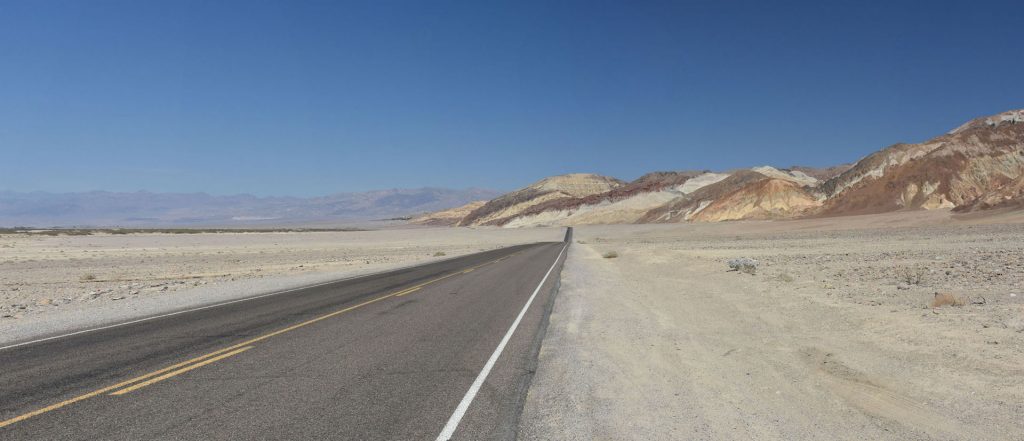
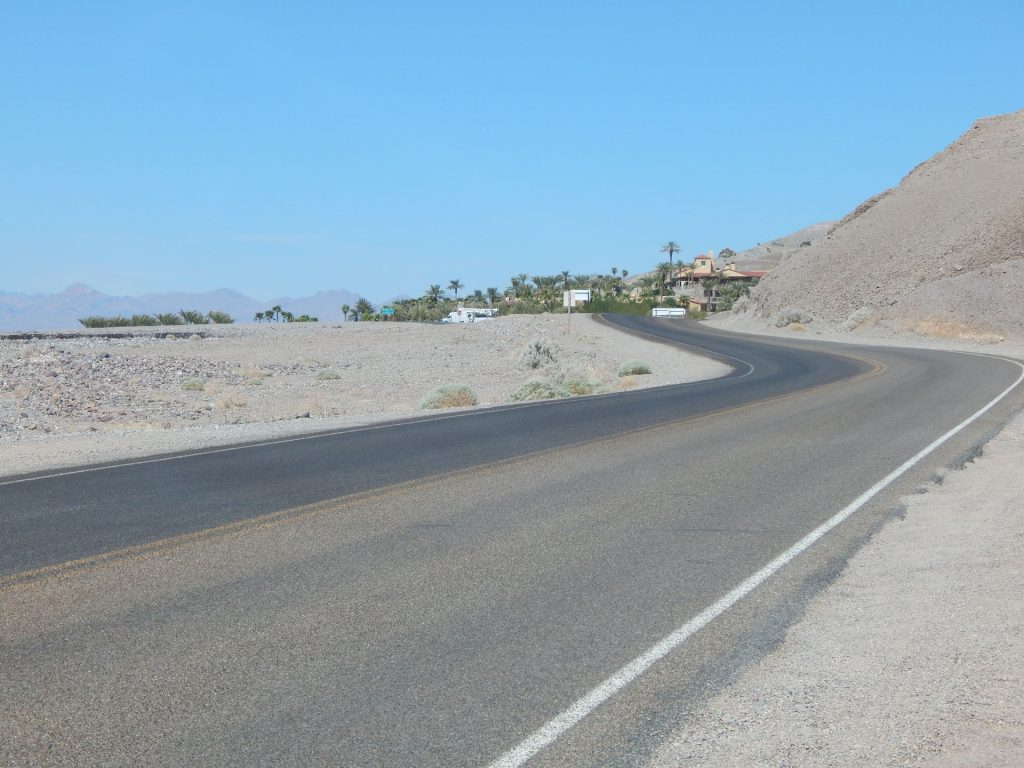
that many movie stars stayed at “back in the day”.
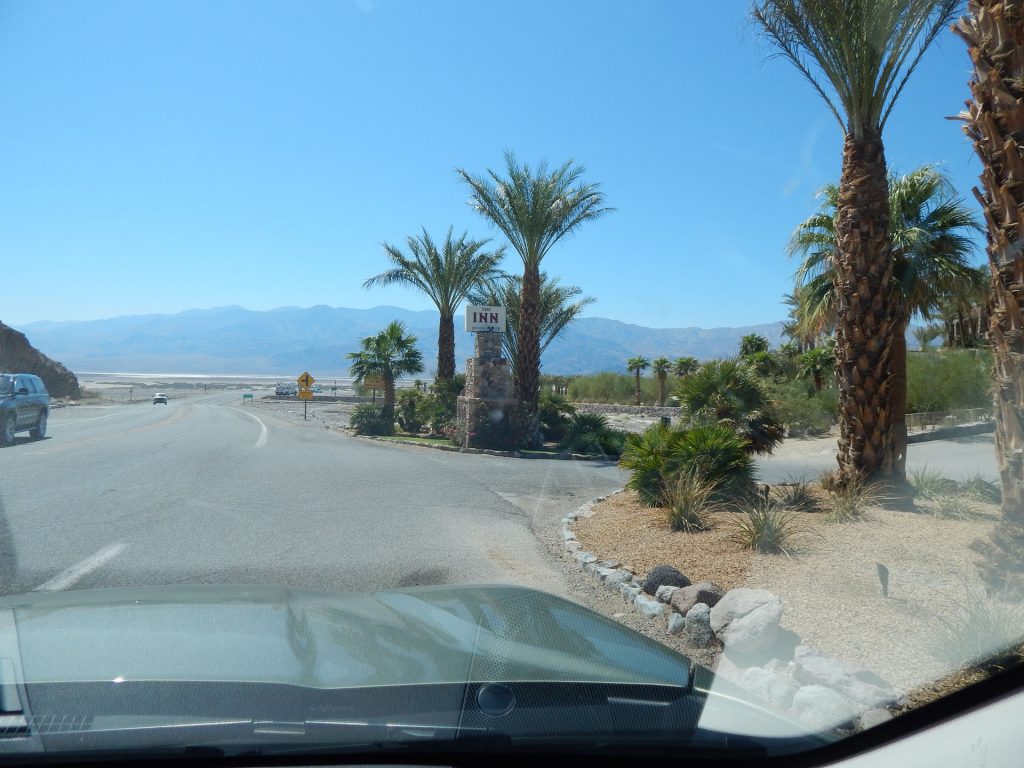
Want more information : https://www.oasisatdeathvalley.com/
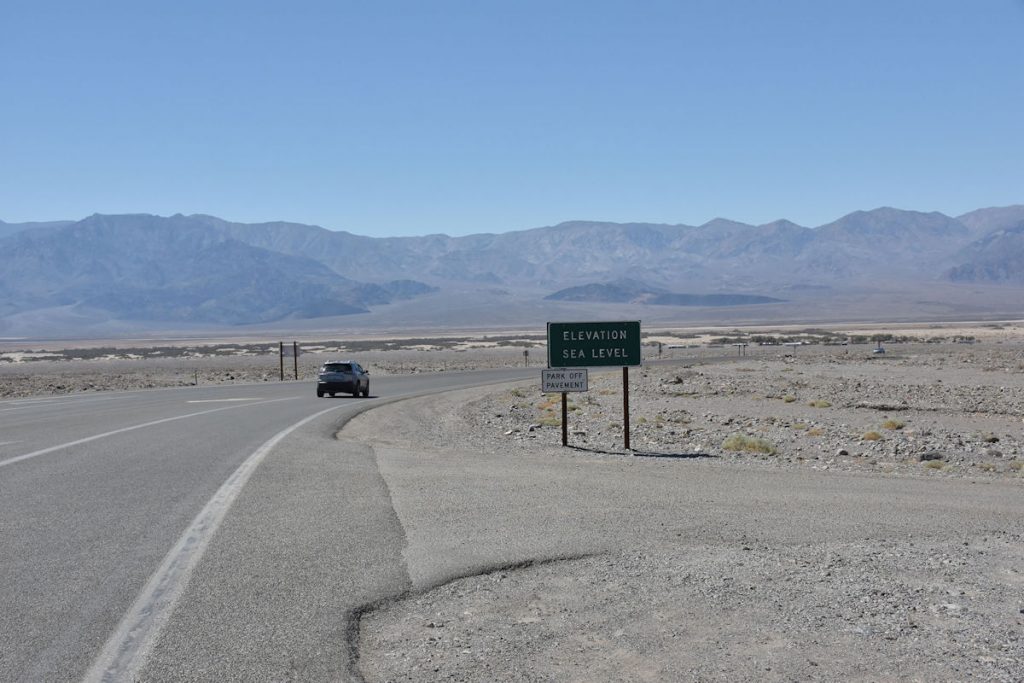
The Visitor Center is just ahead – down the hill.
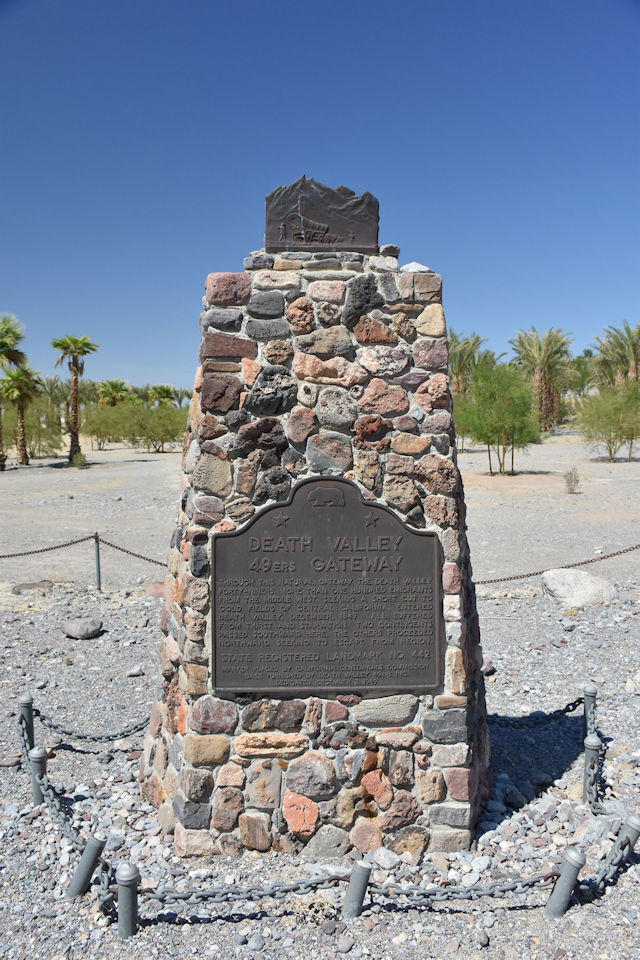
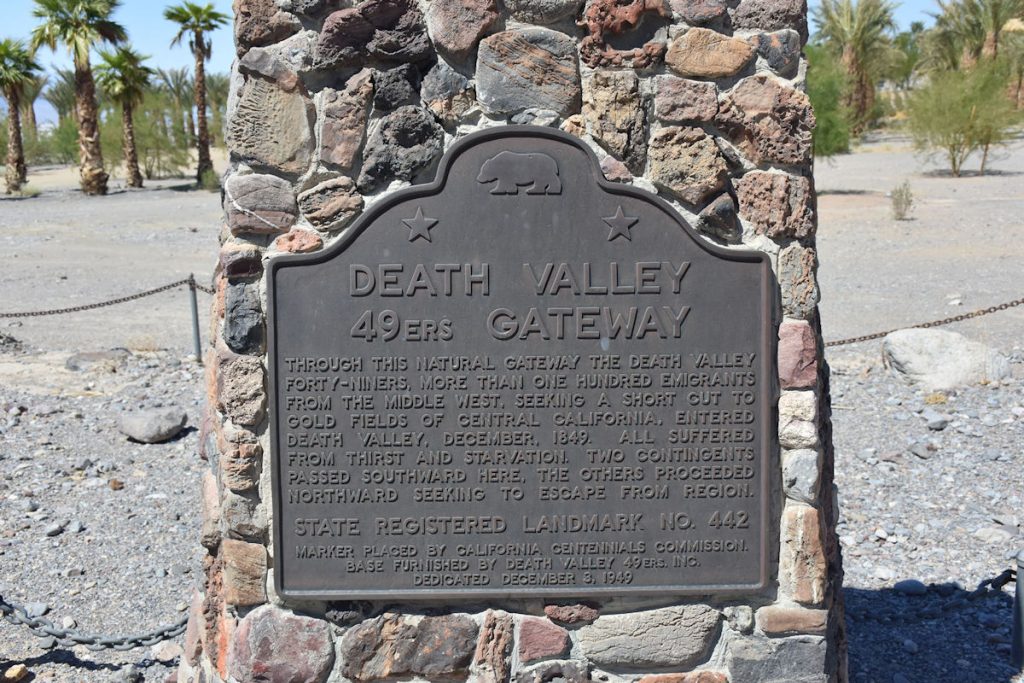
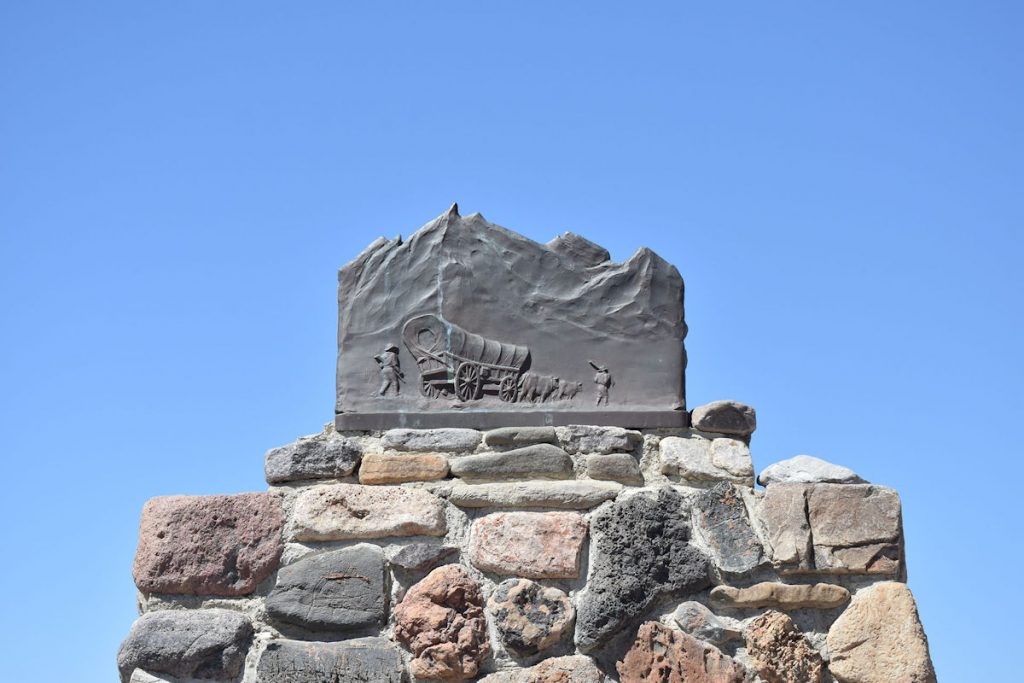
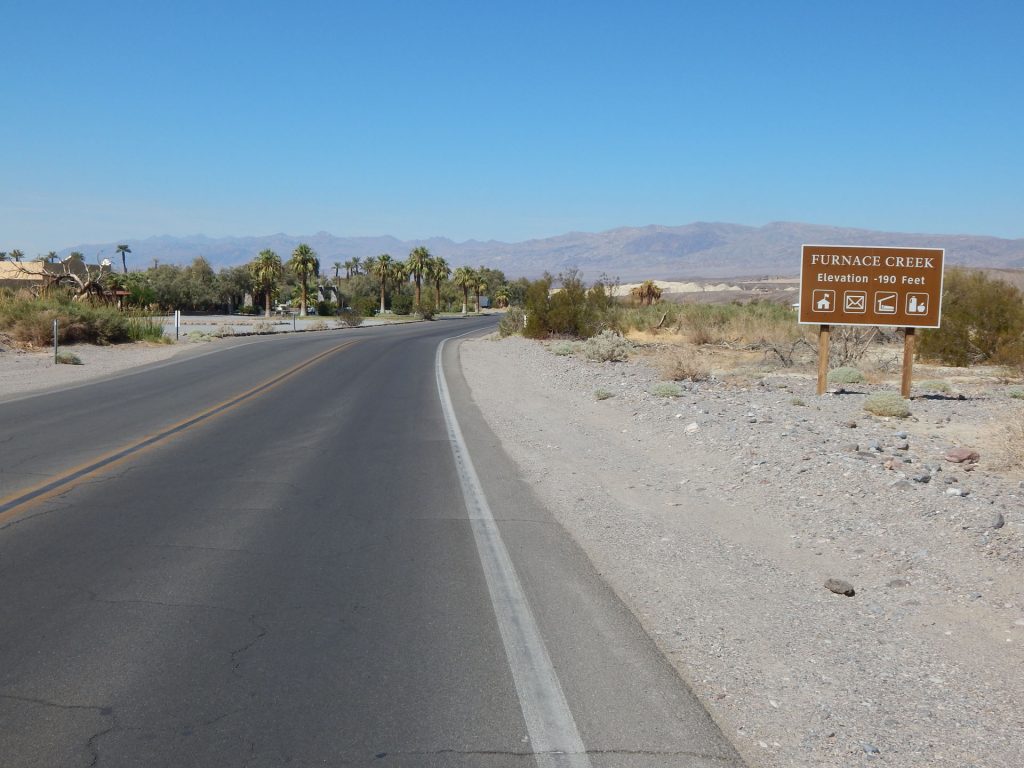
Welcome to the town of Furnace Creek. There is even a post office!

They even had large canopies in the parking lot so you could park in the shade. How nice!
I splurged and bought a t-shirt.
Furnace Creek is the western-most point on our trip. From here, we turn east and begin our long journey home.
After Furnace Creek, we continued east to Zabriskie Point.
Named for Christian Brevoort Zabriskie, vice-president and general manager of the Pacific Coast Borax Company in the early 20th century. The company’s 20-mule teams were used to transport borax from its nearby mining operations.
Five million years ago, this area was covered by a large lake. During its existence, sediments from nearby formations and volcanic activity settled and created what is now called the Furnace Creek Formation. Camels, mastodons, horses, carnivores, and birds left tracks on the lakeshore mud flats. Borates and rhyolites mixed with other minerals to form the variety of colors seen today.
Zabriskie Point is also a 1970s movie about the counter-culture of the time, with music by Pink Floyd and Jerry Garcia.
Some of the movie was filmed here on location.


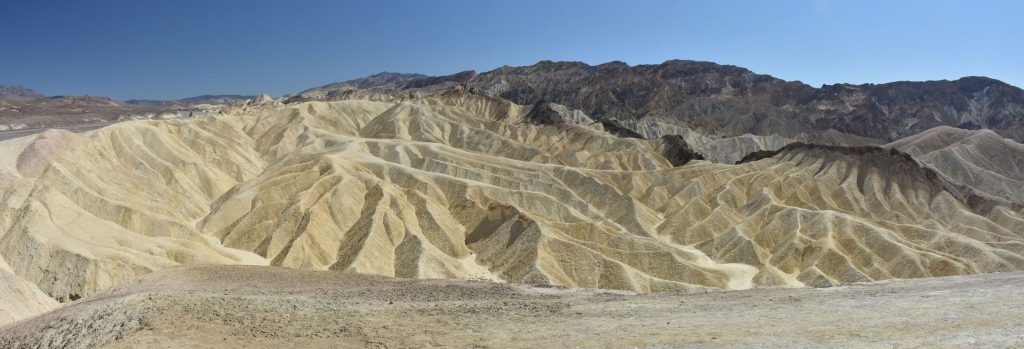
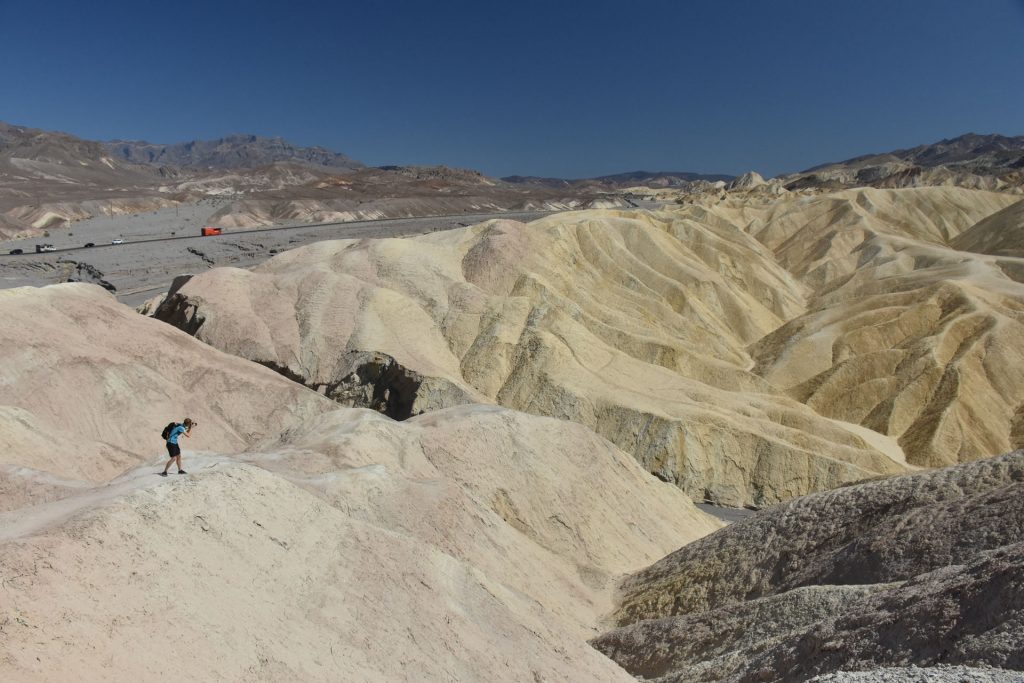
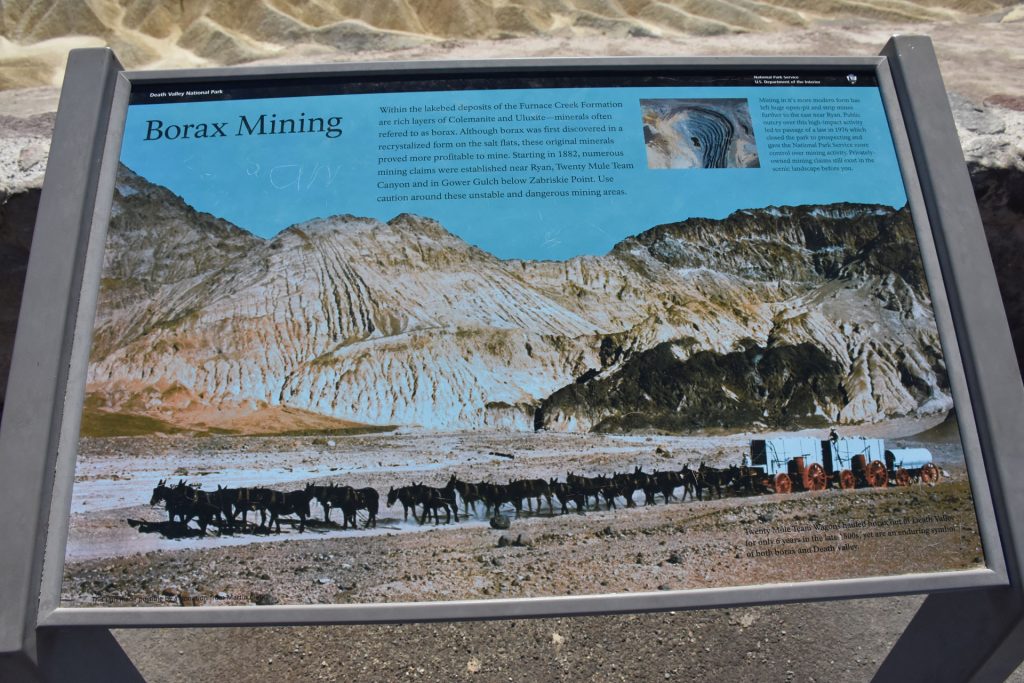
I can remember when my mom used Borax laundry soap to get our clothes clean.
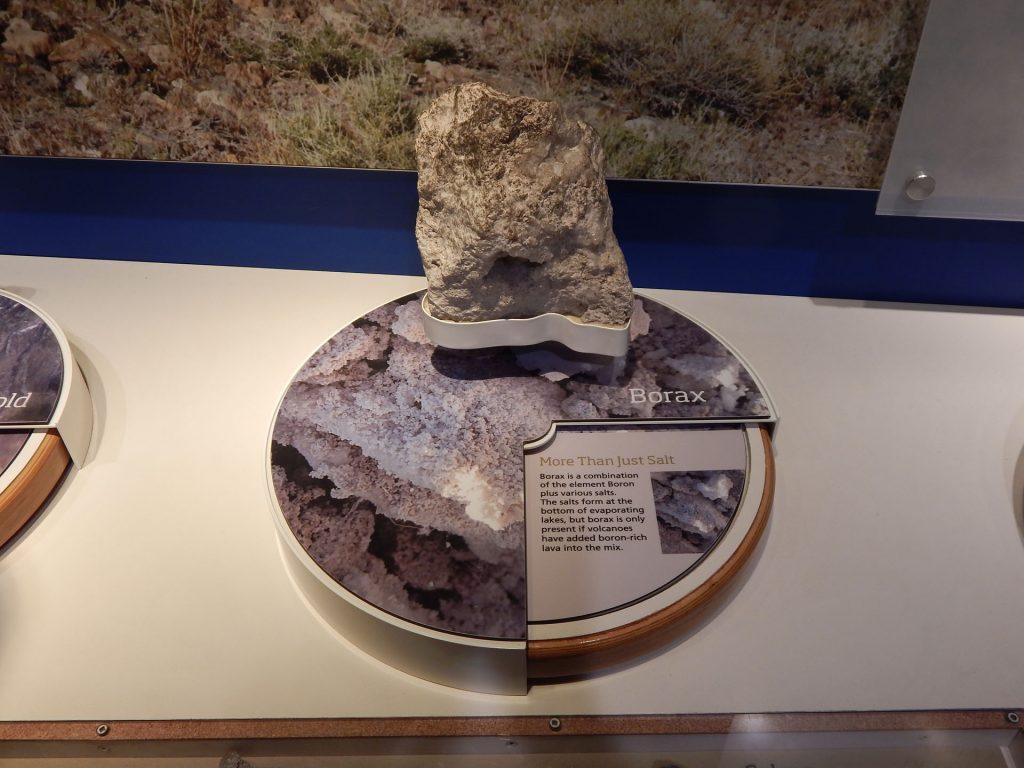
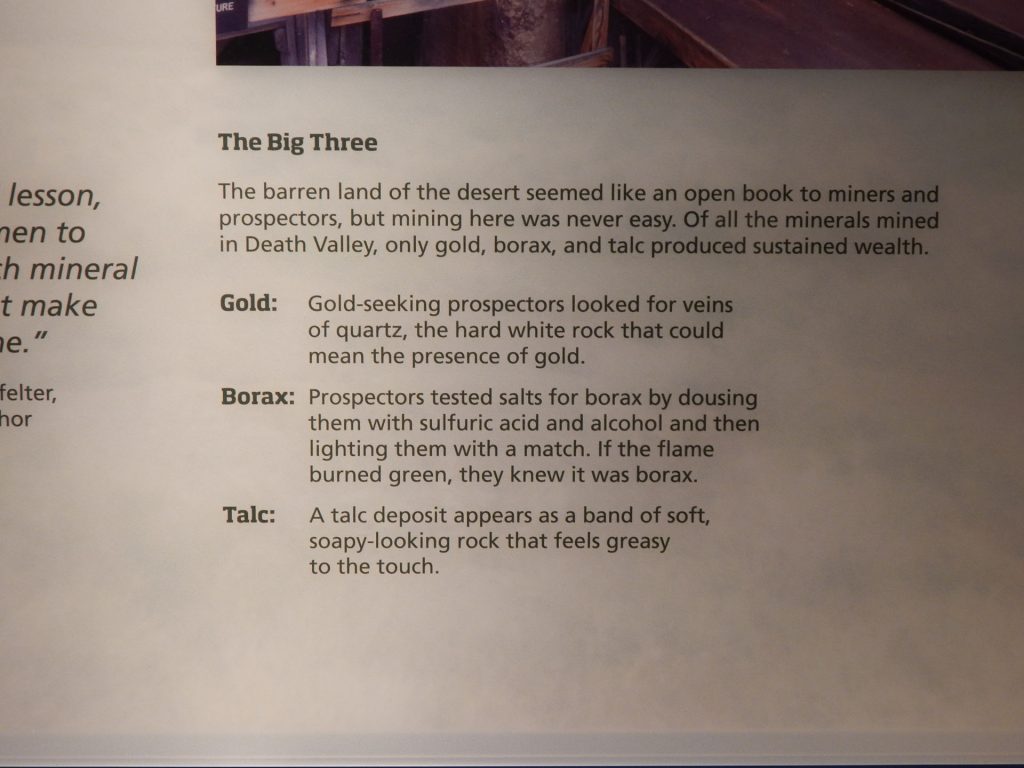
Next, we took a detour off the main highway to go up to Dante’s View,
a 5,476-foot peak overlooking Death Valley at Badwater Basin.
It’s about 15 miles out of the way, but well worth it!

Just on the other side of this peak is a spectacular view of Death Valley.

The salt flats are very visible just right of center.
The highway we were on through Death Valley is visible on the right between this mountain and the salt flats.
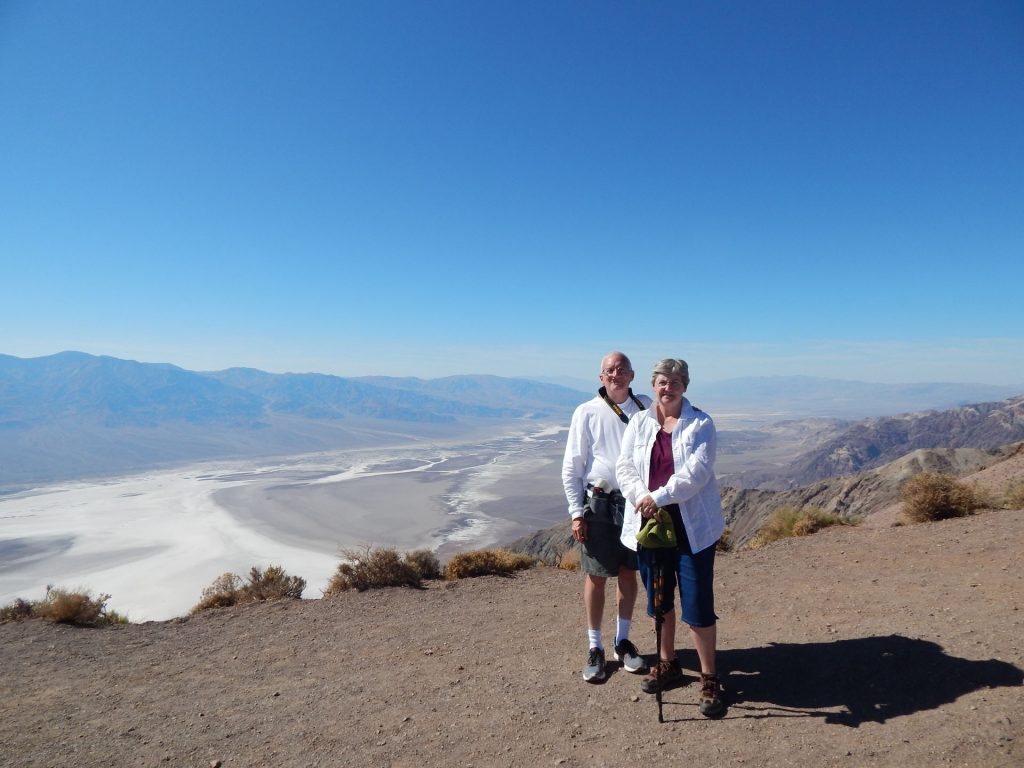
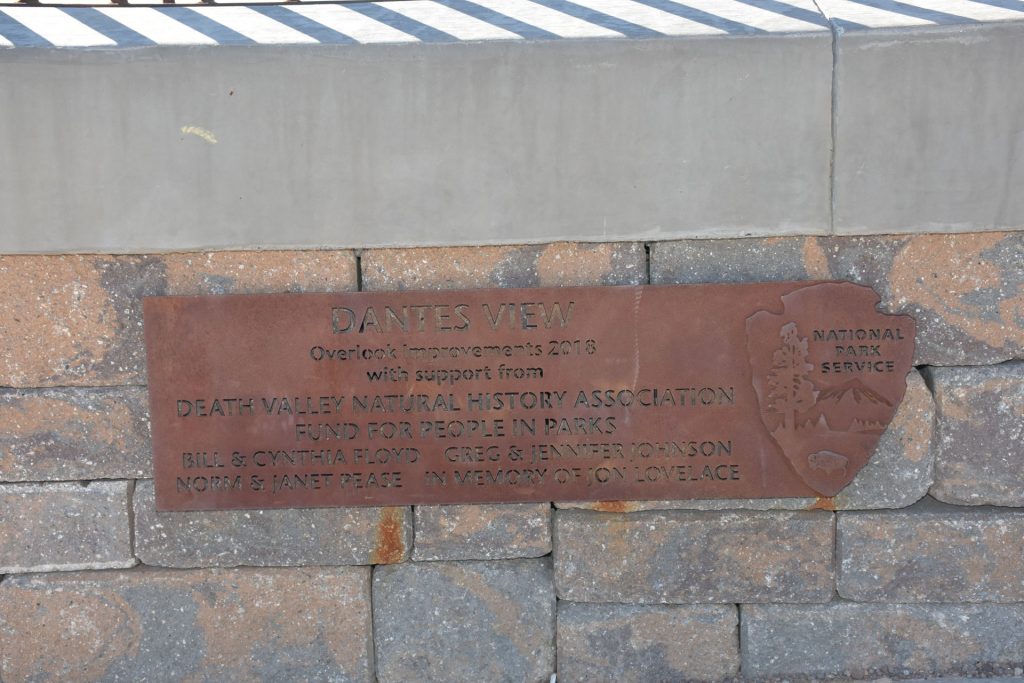
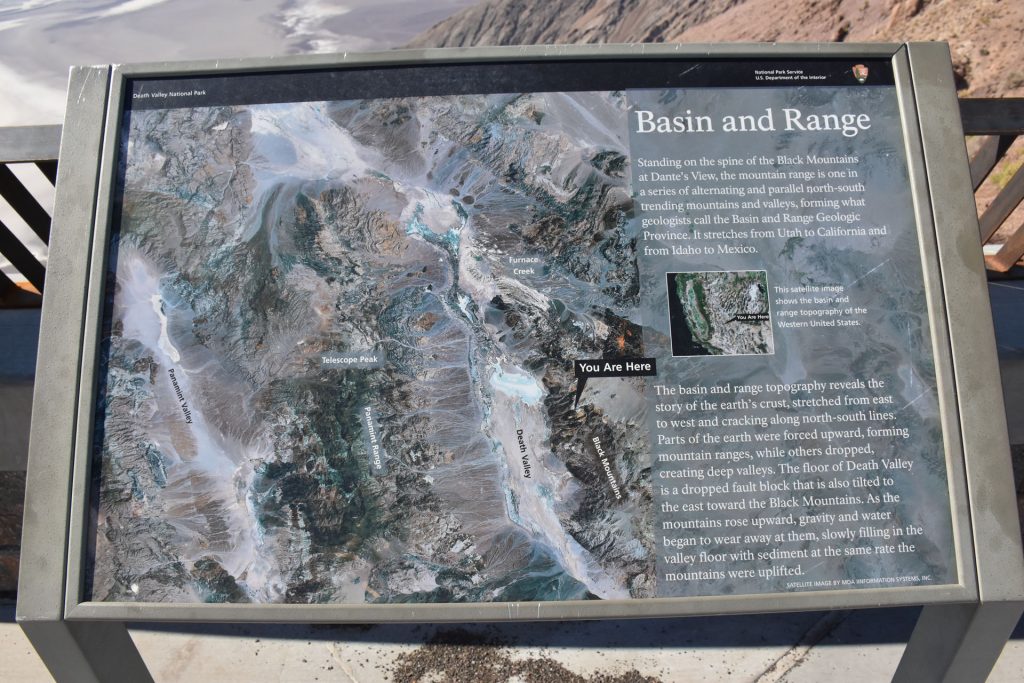
In the previous photos we were at the “You Are Here” point looking
to the left (west) over Death Valley.
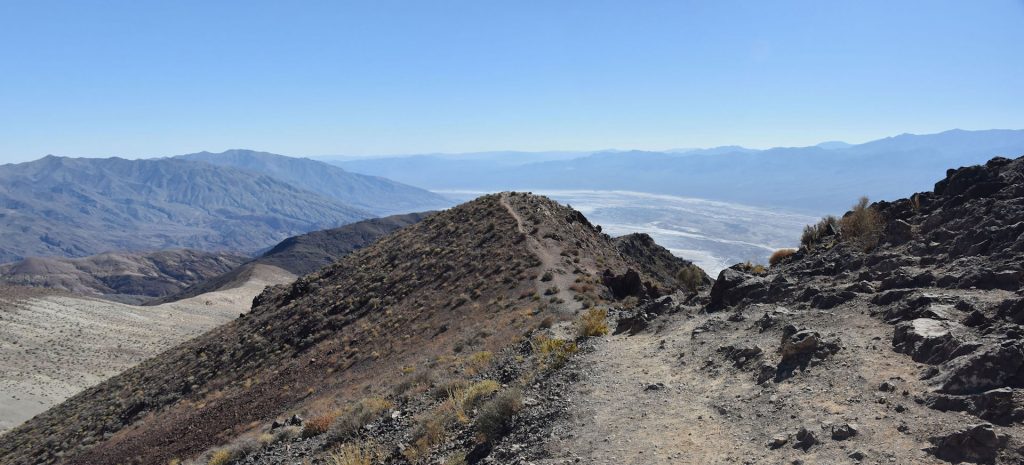
I couldn’t resist. At least the temperature had dropped to only 95 degrees.
It had been 108 down the valley floor.

I had the trail all to myself out and back.
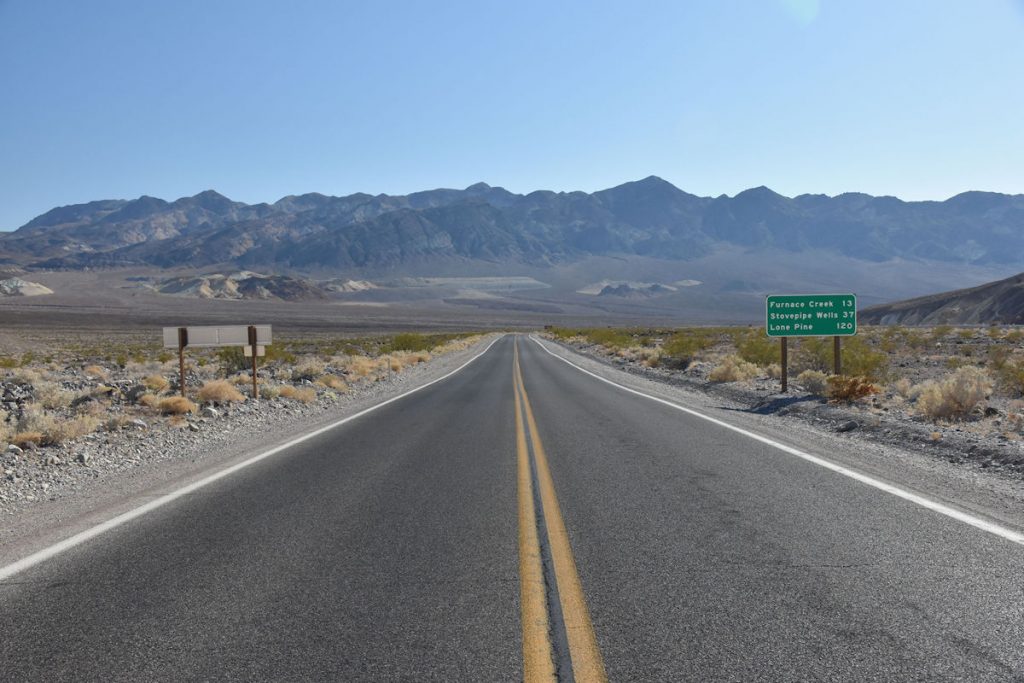
back into Death Valley. What a great day this has been!
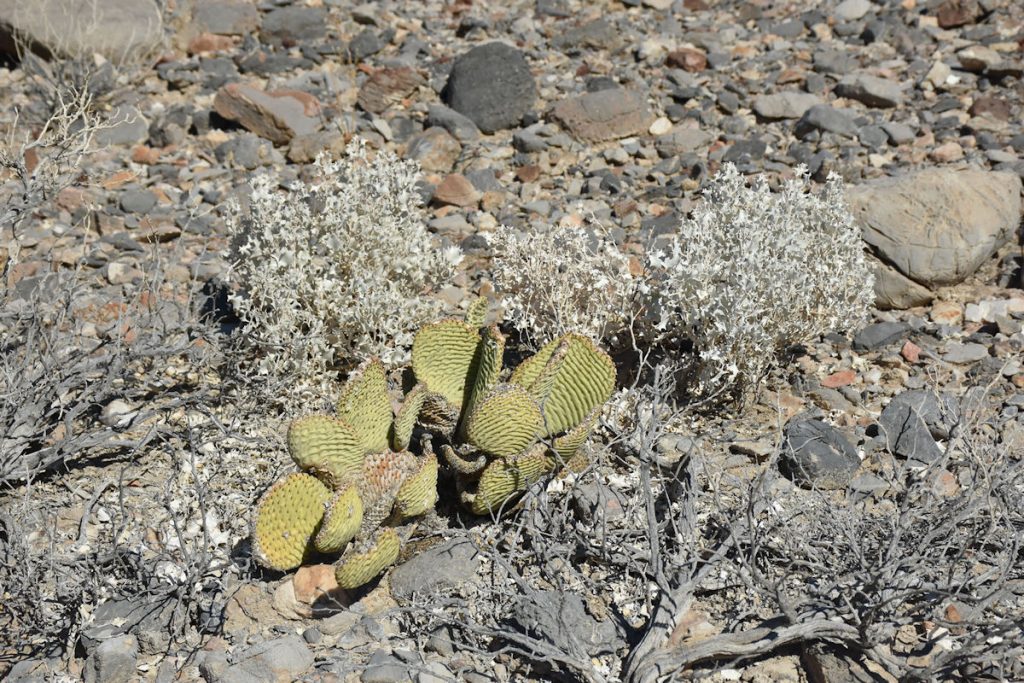
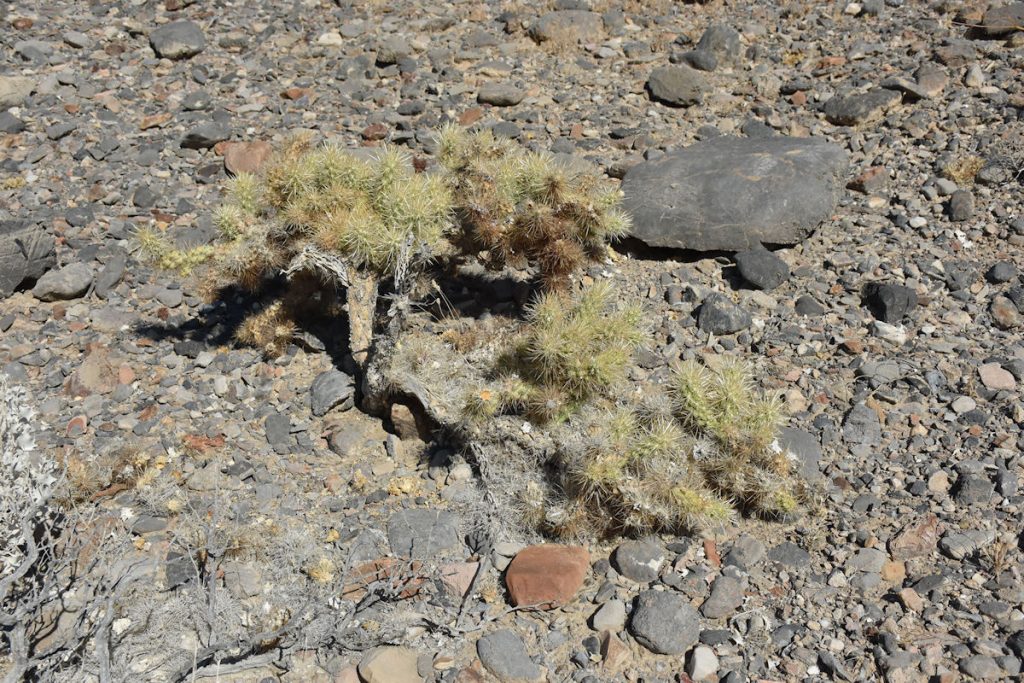
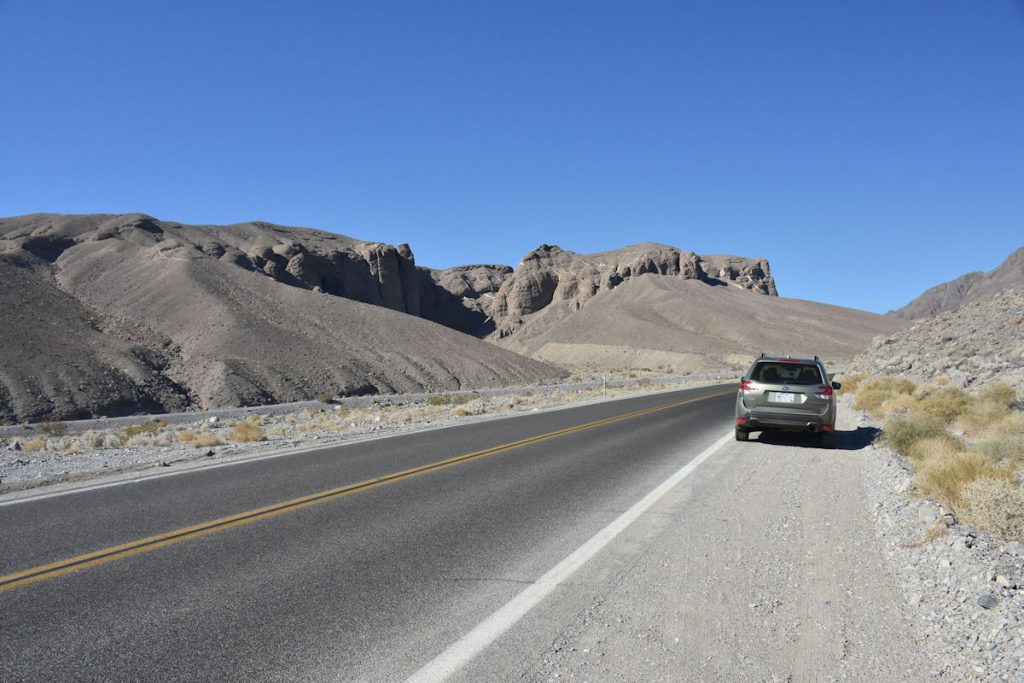
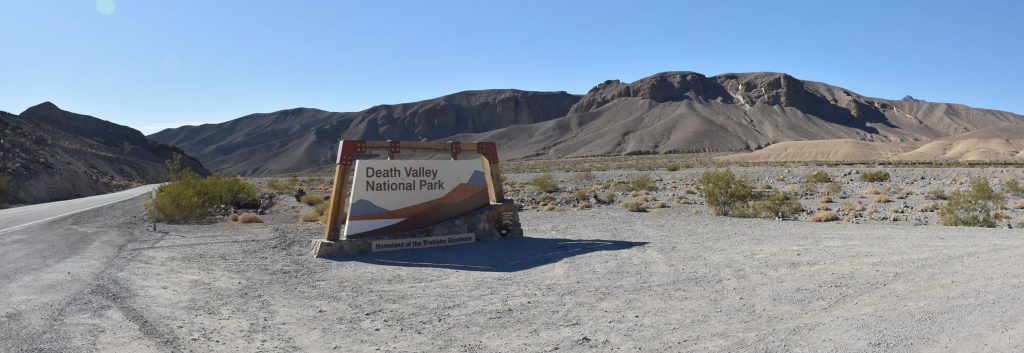
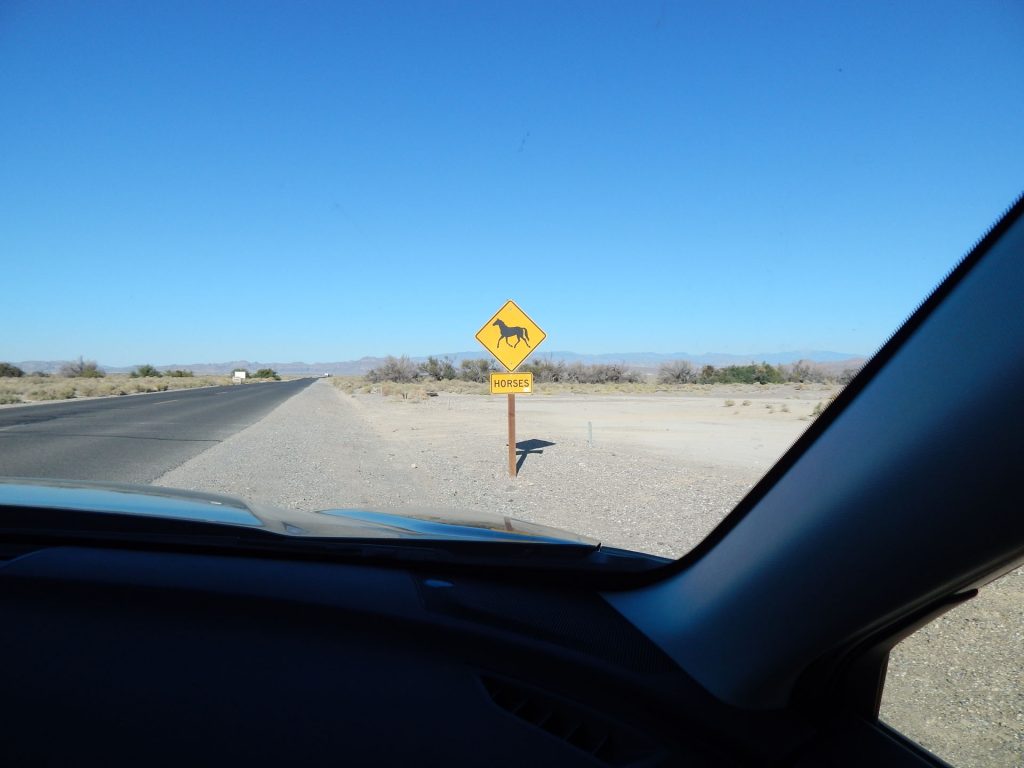
Watch for wild horses. OK, we will.
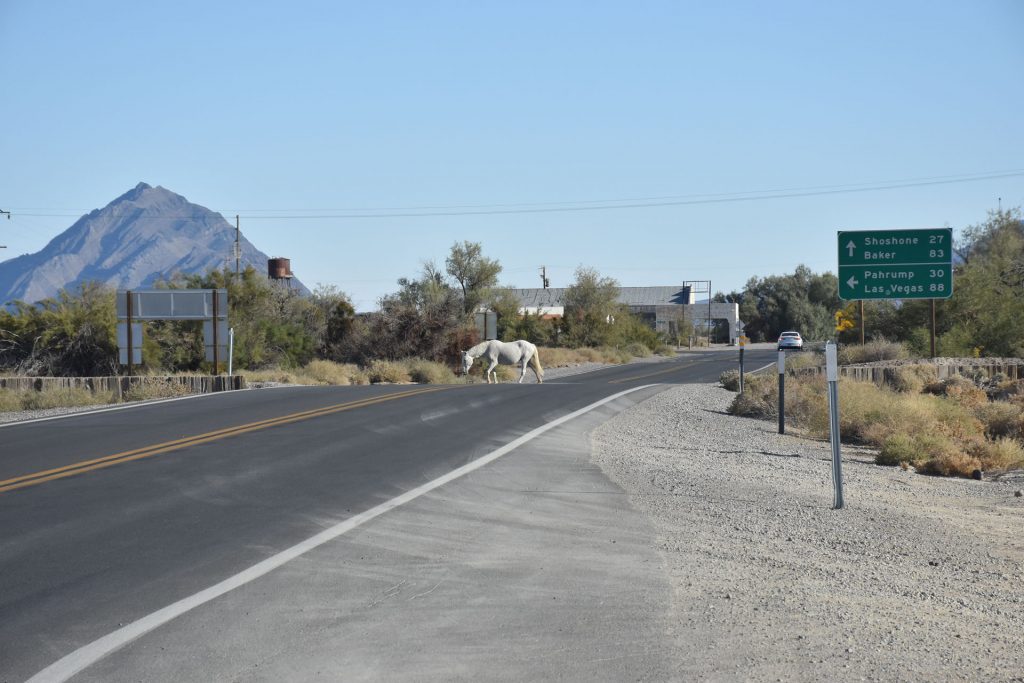
Just a half mile ahead, we saw this horse crossing the road.
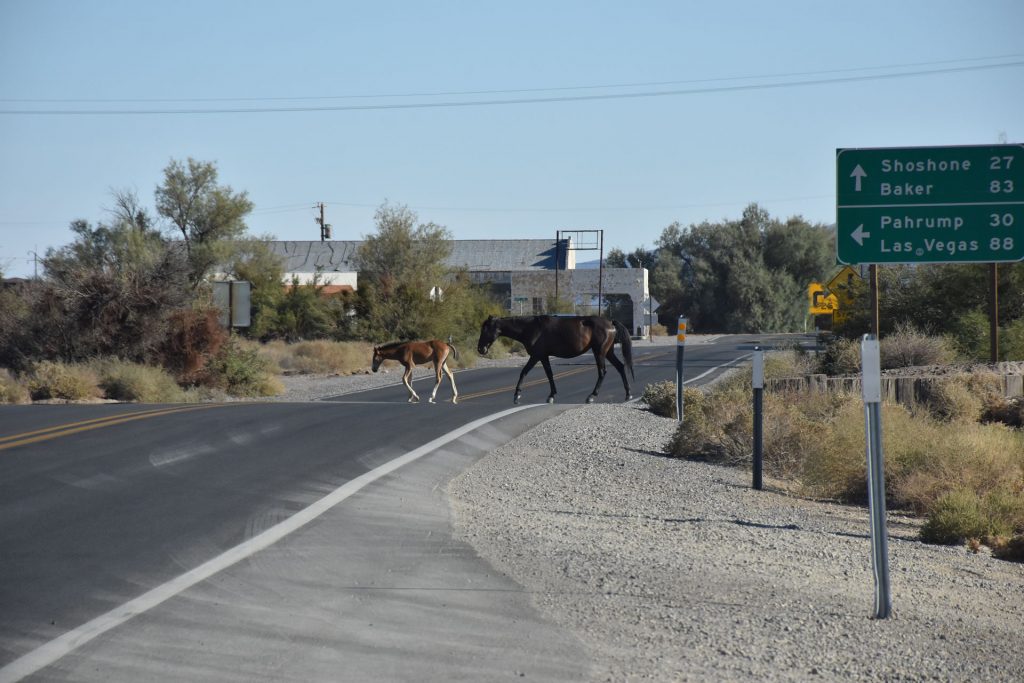

The driver stopped and turned on the flashing lights to warn other cars
until the horses had safely crossed.
Here, you can see one horse crossing directly in front of the bus.
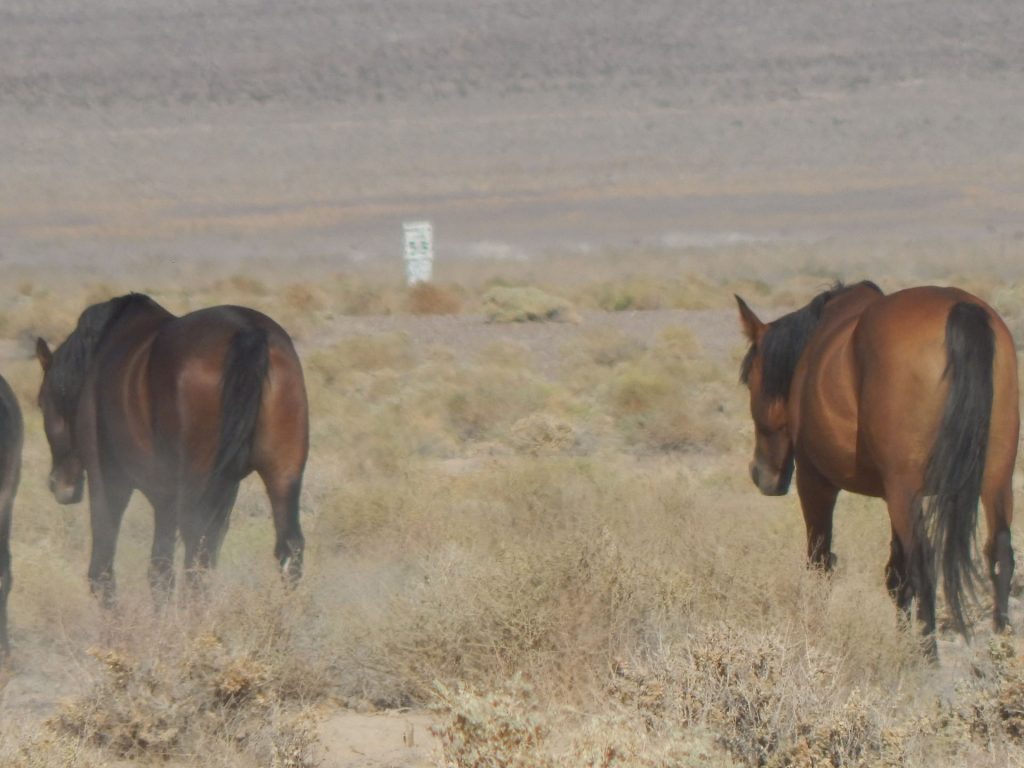
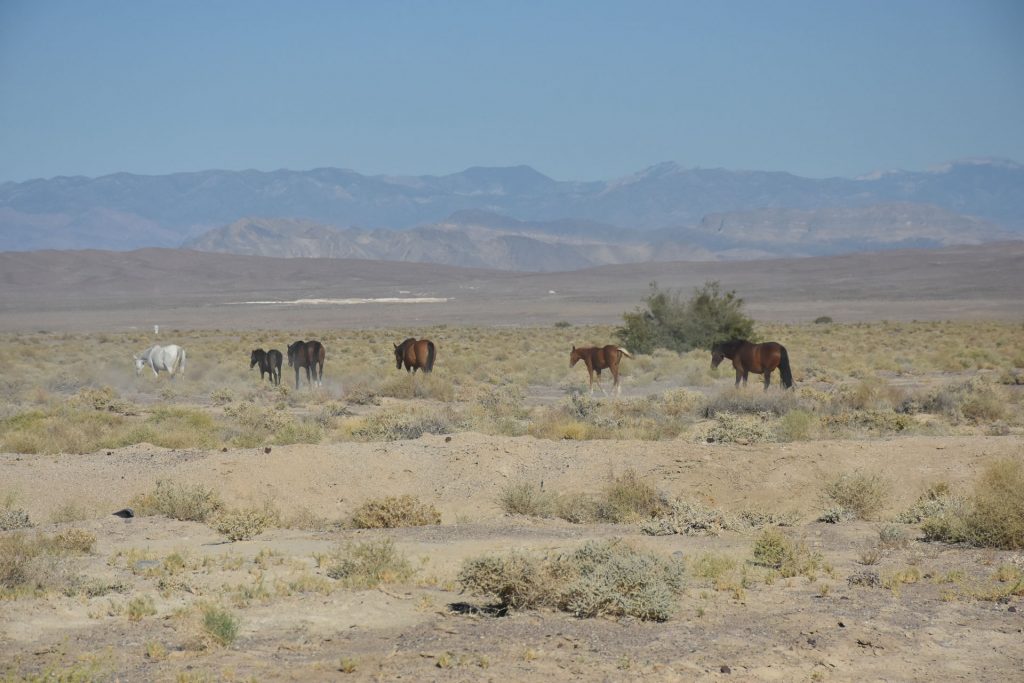

Tomorrow, we start our long journey home – eastbound for the first time in 2 weeks.
Join us as we drive past Las Vegas (again) on our way to Zion National Park, Utah.
Glad you could ride with us today!
Read more about Death Valley here: https://en.wikipedia.org/wiki/Death_Valley
Mileage Today: 201 Miles
Trip Total: 3,135 Miles
PROCEED TO DAY 14 – PAHRUMP, NEVADA TO ZION NATIONAL PARK, UTAH
